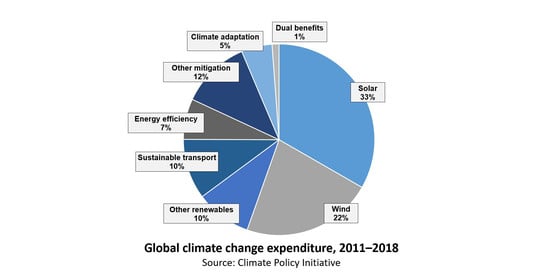Energy and Climate Policy—An Evaluation of Global Climate Change Expenditure 2011–2018
Abstract
1. Introduction
2. Current Energy Policies
3. Engineering Challenges of the Various Energy Technologies
3.1. The Intermittency Problem (of Wind, Solar, and Tidal-Generated Electricity)
3.2. The Power Density Problem
3.3. The Limited Resources Problem
3.3.1. The Neo-Malthusian Debate; “Sustainable” Versus “Renewable”
3.3.2. “Peak Oil”, “Peak Gas”, And “Peak Coal”
3.3.3. The Mineral Scarcity Problem
4. Environmental Concerns Associated with the Various Energy Technologies
4.1. Reducing Greenhouse Gas Emissions
- (1)
- Coal/oil to gas. Transitioning from using the higher CO2-emitting coal and oil (and peat) to using more natural gas. This keeps many of the advantages of still using fossil fuels, but significantly reducing total CO2 emissions [131,132,133,134,135,136,137]. For instance, de Gouw et al. (2014) calculated that, “Per unit of energy produced, natural gas power plants equipped with combined cycle technology emit on an average 44% of the CO2 compared with coal power plants” [131]. The transition to gas has also been found to significantly reduce air pollution (as we will discuss in Section 4.3.1) [131,132,133,134]. Some have argued that such a transition might reduce the motivation to completely abandon fossil fuels [137,138], and others have argued that, if substantial methane leakage is associated with such a transition, the net greenhouse gas emissions may still be high [139]. Nonetheless, it has been argued that in many ways this is the easiest and simplest “short-term” transition to immediately reducing global CO2 emissions (which are still increasing, as can be seen from Figure 2) [41,131,132,133,134,135,136,137].
- (2)
- Carbon capture and storage (CCS). In terms of reducing CO2 emissions more completely, the implementation of CCS technology has considerable appeal. Essentially, the emissions from combustion are captured, compressed into a dense fluid, then transported via pipelines and injected into underground storage facilities. This would mean that power plants could continue to use fossil fuels as before, with little or no emissions. On paper, this appears an almost perfect solution for reducing global CO2 emissions, and technology for doing this exists, yet it still has not been implemented on a large enough scale to substantially reduce global emissions [134,140,141,142]. The main problem is that carbon capture consumes 15–30% of energy from new power plants, and the resultant increase in overall costs currently makes this option economically unviable [142]. Furthermore, storage requires suitable geological sites, such as saline aquifers or abandoned oil fields [142]. Therefore, many have argued that more research and development should be placed into improving CCS technologies to a level where they are economically viable enough for wide-scale implementation [134,140,141,142].
- (3)
- Improving energy efficiency. A different approach to reducing the emissions from electricity generation (and energy usage more broadly) is to reduce the amount of electricity (and energy) used by society, that is, to improve the efficiency of energy usage. As the cost of energy is often a key component of the cost of many activities, it is often (mistakenly) assumed that improving energy efficiencies always makes economic sense too. Clearly, many improvements in energy efficiencies can also make economic sense and/or be emotionally satisfying. However, usually, total energy usage is not the only factor that needs to be considered. Therefore, in a survey of the shipping sector to gauge the implementation of over 30 energy efficiency and CO2 emissions reduction technologies, Rehmatulla et al. (2017) found that, “the measures with high implementation have tended to be those that have small energy efficiency gains at the ship level, and the uptake of CO2-reducing technologies, particularly alternative fuels, is low despite their high potential for reducing CO2 emissions” [143]. Even when energy efficiency measures might be cost-effective, it has been well-recognized that they are often only slowly adopted—a phenomenon referred to as “the energy efficiency paradox” [144,145].
- (4)
- Increased nuclear usage. Advocates for nuclear power note that nuclear power generation shares many of the advantages of fossil fuel-generated electricity (see Section 3), without the concerns about peak oil/gas/coal (Section 3.3.2) or emissions [20,21,23,39,41,42,43,44,51,52]. Moreover, by studying the energy transitions to nuclear made by both Sweden and France from the 1960s to 1990s, Qvist and Brook (2015) argue that, “if the world built nuclear power at no more than the per capita rate of these exemplar nations during their national expansion, then coal- and gas-fired electricity could be replaced worldwide in less than a decade” [52]. However, even among those calling for the urgent reduction in CO2 emissions, there seems to be considerable public resistance to nuclear energy.
- (5)
- Increased use of hydroelectricity and geothermal. Hydroelectric power is the leading source of renewable energy worldwide [155], and it has the potential to provide improved energy security by providing abundant, cheap, reliable, and dispatchable energy [73]. Therefore, increasing the percentage of electricity produced from hydropower instead of fossil fuels is one approach to significantly reducing CO2 emissions. However, there are only certain geographical locations where hydroelectric dams could feasibly be built. Therefore, while countries such as Norway can rely predominantly on this option for its electricity, most countries cannot. Also, the associated changes in the landscape are often enormous. As a result, the construction of hydroelectric dams often raises considerable ecological as well as social concerns [73,155,156].
- (6)
- Fossil fuels to biomass/waste. The burning of biomass (e.g., wood pellets) and organic waste to produce electricity releases at least as much CO2 as fossil fuels, as fossil fuels are essentially fossilized “biomass” that has been buried underground for millions of years. However, because plants grow by absorbing CO2 from the atmosphere (through photosynthesis), and animals grow by consuming plants, other animals, or decaying matter, it is argued that burning biomass and biofuel is “carbon-neutral”. That is, the CO2 released during combustion is balanced by the CO2 absorbed during growth. Therefore, the net CO2 emissions per kWh of electricity are calculated to be much lower than for fossil fuels (Figure 10).
- (7)
- Increased use of the intermittent renewables (wind/solar/tidal). As mentioned in Section 3.1, Jacobson et al. [13,14,15,16] advocate for an energy transition towards generating 100% of electricity from wind, water, and sunlight (WWS). The simplicity of this narrative seems to be emotionally compelling among many researchers and writers [11,12,17,18,32] and environmental advocacy groups [25,26,27,28]. As a result, the idea that intermittent forms of electricity generation, supplemented with hydro or energy storage systems, could offer a viable alternative to the current systems has become very popular in the public. However, as discussed in the introduction, this idea has been heavily criticized as being physically implausible [8,19,20,21,22,23,24,26,38,39,41,42,43,44,45], for the reasons outlined in Section 3.
- (1)
- Biofuels. The rationale for this strategy is equivalent to Strategy (6) for the electricity sector, i.e., to reduce the amount of fossil fuel petroleum that is used by adding biofuels to the diesel or petroleum fuel used by vehicles. As for biomass, it is argued that these fuels are “carbon-neutral” because CO2 is absorbed from the atmosphere as they are being grown. However, as for biomass, biofuels also have a very low power density, so these likewise raise concern about impacts on biodiversity [51,53,54,55], and about competition with the cultivation of food [159]. There is also an additional concern in that the energy return on investment (EROI) of most biofuels is very low, typically in the range 0.8 to 1.6, whereas that of petroleum is typically greater than 10 [99,160,161]. The EROI of a fuel is the amount of energy it provides divided by the amount of energy required to produce the fuel. Therefore, it needs to be greater than 1 to provide extra energy to society, but it has been argued that it should be greater than at least 3 for a sustainable society [160].
- (2)
- Improved public transport. If more commuters are able to carry out much or all of their transport by sharing public transport systems, then on average this should reduce the total CO2 emissions of the commuters. This is especially so if the public transport in question has relatively low CO2 emissions. Encouraging commuters to cycle or walk instead of driving could also reduce their individual “carbon footprint”. Unfortunately, we note that the development of public transport facilities can sometimes conflict with other interests. For example, when Dublin City Council (Ireland) planned to widen the routes on a number of radial routes to provide for bus and cycle lanes, a public outcry was raised out of concern for the mature roadside trees that would need to be felled to facilitate the project [162,163]. While suburban rail networks have the potential to reduce carbon emissions while also saving energy and money, these are susceptible to the risks of cost overruns, project delays and benefit shortfalls that go with large infrastructure projects [164]. Meanwhile, rural communities often cannot be adequately served by these public transport systems. As a result, policies which promote public transport systems over cars can be biased against rural dwellers.
- (3)
- Use of electric vehicles (EVs). If the electricity used to power an EV is produced by wind, nuclear, solar, or hydro power, then the CO2 emissions are significantly lower than those from internal combustion engine vehicles. Therefore, in countries such as Norway, Iceland, and Costa Rica, a motorist who switches to driving an EV could dramatically reduce their personal “carbon footprint” [165]. That said, if the CO2 emissions from electricity production are high, then driving an EV could well increase total CO2 emissions. For instance, Asaithambi et al. (2019) have calculated that EVs used in China produce higher CO2 emissions than a regular car, although for the US, Germany, and Japan, the average emissions for an EV were lower than that of a regular car [166]. On the other hand, Onat et al. (2015) calculated by analyzing the state-wide electricity generation mixes that EVs are the least carbon-intensive vehicle option in only 24 of the 50 United States [167]. Still, we can appreciate why the sale of EVs is being promoted as environmentally desirable. However, we remind readers of the discussion of mineral scarcity in Section 3.3.3.
4.2. Climate Change Caused by Wind Farms
4.2.1. Local Temperature Changes Caused by Wind Farms
4.2.2. Changes in Wind Patterns Induced by Wind Farms
4.2.3. Local Precipitation Changes Caused by Wind Farms
4.2.4. Increase in Biological CO2 Emissions Caused by Wind Farms
4.3. Reducing Air Pollution
- Particulate matter (PM). This includes larger soot and smoke particles as well as microscopic particles which are often divided into particles less than 10μm in size (PM10) and those less than 2.5μm in size (PM2.5). The term “black carbon (BC)” is used to refer to PM that is composed of only carbon.
- Various oxides of nitrogen, collectively referred to as NOx
- Sulfur dioxide (SO2)
- Carbon monoxide (CO)—not to be confused with CO2
- Ground-level ozone (O3)—not to be confused with the stratospheric ozone which is found in the “ozone layer”
- Volatile organic compounds (VOCs)
- (1)
- Air pollution from electricity generation (chiefly from coal-burning plants) and industry
- (2)
- Air pollution arising from transport, particularly during traffic
- (3)
- Air pollution from the household burning of solid fuels (chiefly biomass, but also coal)
4.3.1. Air Pollution from Electricity Generation
4.3.2. Urban Air Pollution from Transport
4.3.3. Air Pollution from the Household Burning of Solid Fuels
4.4. Protecting Biodiversity
5. Socioeconomic Concerns Associated with the Various Energy Technologies
- (1)
- The goal of reducing global CO2 emissions is directly opposed to the standard pathways of economic development which have been followed historically.
- (2)
- We stress that this does not in itself preclude the possibility that alternative pathways to economic development which also reduce global CO2 emissions could exist. Indeed, as discussed in Section 4.1, France and Sweden are two notable examples of developed nations that combined economic growth with relatively low CO2 emissions through investment in nuclear [52]. Therefore, research into exploring the possibilities of new pathways to economic development is justifiable and laudable [10,52,232,234]. However, we should acknowledge that new pathways by their very nature will not have been tested to the extent of the standard historic pathways.
- (3)
- Aside from CO2 emissions, and despite the neo-Malthusian predictions discussed in Section 3.3.1, the EKC studies confirm that the standard pathways to economic development actually lead to reductions in environmental degradation for many aspects of the environment, especially those associated with local pollution.
6. Discussion
7. Conclusions
Author Contributions
Funding
Acknowledgments
Conflicts of Interest
References
- Intergovernmental Panel on Climate Change (IPCC); Pachauri, R.K.; Meyer, L. Climate Change 2014: Synthesis Report; IPCC: Geneva, Switzerland, 2015. [Google Scholar]
- UNFCCC. Kyoto Protocol to the United Nations Framework Convention on Climate Change; UNFCCC: New York, NY, USA, 1997. [Google Scholar]
- UNFCCC. Addendum. Part two: Action taken by the Conference of the Parties at its twenty-first session. In Proceedings of the Conference of the Parties on Its Twenty-First Session, Paris, France, 30 November–13 December 2015; UNFCCC: New York, NY, USA, 2016. [Google Scholar]
- Boden, T.A.; Marland, G.; Andres, R.J. Global, Regional, and National Fossil-Fuel CO2 Emissions; Carbon Dioxide Information Analysis Center, Oak Ridge National Laboratory, U.S. Department of Energy: Oak Ridge, TN, USA; Available online: https://doi.org/10.3334/CDIAC/00001_V2017 (accessed on 26 January 2020).
- Friedlingstein, P.; Jones, M.W.; O’Sullivan, M.; Andrew, R.M.; Hauck, J.; Peters, G.P.; Peters, W.; Pongratz, J.; Sitch, S.; Quéré, C.L.; et al. Global Carbon Budget 2019. Earth Syst. Sci. Data 2019, 11, 1783–1838. [Google Scholar] [CrossRef]
- Connolly, R.; Connolly, M.; Carter, R.M.; Soon, W. How Much Human-Caused Global Warming Should We Expect with Business-As-Usual (BAU) Climate Policies? A Semi-Empirical Assessment. Energies 2020, 13, 1365. [Google Scholar] [CrossRef]
- Smil, V. Energy and Civilization: A History; Reprint ed.; MIT Press: Cambridge, MA, USA, 2018; ISBN 978-0-262-53616-5. [Google Scholar]
- Epstein, A. Moral Case for Fossil Fuels; Portfolio Hardcover: New York, NY, USA, 2014; ISBN 978-1-59184-744-1. [Google Scholar]
- Bezdek, R.; Idso, C.D.; Legates, D.R.; Singer, S.F. Climate Change Reconsidered II: Fossil Fuels; Bast, J.L., Bast, D.C., Eds.; The Heartland Institute: Arlington Heights, IL, USA, 2019; ISBN 978-1-934791-45-5. [Google Scholar]
- Gupta, J. The History of Global Climate Governance, 1st ed.; Cambridge University Press: Cambridge, UK; New York, NY, USA, 2014; ISBN 978-1-107-04051-9. [Google Scholar]
- Gore, A. An Inconvenient Truth: The Planetary Emergency of Global Warming and What We Can Do about It, 1st ed.; Bloomsbury Publishing PLC: New York, NY, USA, 2006; ISBN 978-0-7475-8906-8. [Google Scholar]
- Gore, A. Inconvenient Sequel, An; Rodale: New York, NY, USA, 2017; ISBN 978-1-63565-108-9. [Google Scholar]
- Jacobson, M.Z.; Delucchi, M.A. Providing all global energy with wind, water, and solar power, Part I: Technologies, energy resources, quantities and areas of infrastructure, and materials. Energy Policy 2011, 39, 1154–1169. [Google Scholar] [CrossRef]
- Jacobson, M.Z.; Delucchi, M.A.; Cameron, M.A.; Frew, B.A. Low-cost solution to the grid reliability problem with 100% penetration of intermittent wind, water, and solar for all purposes. Proc. Natl. Acad. Sci. USA 2015, 112, 15060–15065. [Google Scholar] [CrossRef]
- Jacobson, M.Z.; Delucchi, M.A.; Cameron, M.A.; Frew, B.A. The United States can keep the grid stable at low cost with 100% clean, renewable energy in all sectors despite inaccurate claims. Proc. Natl. Acad. Sci. USA 2017, 114, E5021–E5023. [Google Scholar] [CrossRef]
- Jacobson, M.Z.; Cameron, M.A.; Hennessy, E.M.; Petkov, I.; Meyer, C.B.; Gambhir, T.K.; Maki, A.T.; Pfleeger, K.; Clonts, H.; McEvoy, A.L.; et al. 100% clean and renewable Wind, Water, and Sunlight (WWS) all-sector energy roadmaps for 53 towns and cities in North America. Sustain. Cities Soc. 2018, 42, 22–37. [Google Scholar] [CrossRef]
- Klein, N. This Changes Everything: Capitalism vs. the Climate, 1st ed.; Penguin: London, UK, 2015; ISBN 978-0-241-95618-2. [Google Scholar]
- Goodall, C. The Switch: How Solar, Storage and New Tech Means Cheap Power for All; Main edition; Profile Books: London, UK, 2016; ISBN 978-1-78125-635-0. [Google Scholar]
- Clack, C.T.M.; Qvist, S.A.; Apt, J.; Bazilian, M.; Brandt, A.R.; Caldeira, K.; Davis, S.J.; Diakov, V.; Handschy, M.A.; Hines, P.D.H.; et al. Evaluation of a proposal for reliable low-cost grid power with 100% wind, water, and solar. Proc. Natl. Acad. Sci. USA 2017, 114, 6722–6727. [Google Scholar] [CrossRef]
- Kelly, M.J. Lessons from technology development for energy and sustainability. MRS Energy Sustain. 2016, 3. [Google Scholar] [CrossRef][Green Version]
- Heard, B.P.; Brook, B.W.; Wigley, T.M.L.; Bradshaw, C.J.A. Burden of proof: A comprehensive review of the feasibility of 100% renewable-electricity systems. Renew. Sustain. Energy Rev. 2017, 76, 1122–1133. [Google Scholar] [CrossRef]
- Shaner, M.R.; Davis, S.J.; Lewis, N.S.; Caldeira, K. Geophysical constraints on the reliability of solar and wind power in the United States. Energy Environ. Sci. 2018, 11, 914–925. [Google Scholar] [CrossRef]
- Brook, B.W.; Blees, T.; Wigley, T.M.L.; Hong, S. Silver Buckshot or Bullet: Is a Future “Energy Mix” Necessary? Sustainability 2018, 10, 302. [Google Scholar] [CrossRef]
- Van Kooten, G.C.; Withey, P.; Duan, J. How big a battery? Renew. Energy 2020, 146, 196–204. [Google Scholar] [CrossRef]
- Greenpeace Canada. Energy Revolution 2015—The Latest Documentation. 2015, p. 364. Available online: https://www.greenpeace.org/canada/en/press-release/1555/energy-revolution-2015-the-latest-documentation/ (accessed on 14 September 2020).
- Connolly, M.; Connolly, R.; Soon, W.; Moore, P.; Connolly, I. Analysis of Greenpeace Business Model; Heartland Institute: Arlington Heights, IL, USA, 2018; p. 74. [Google Scholar]
- Extinction Rebellion. This Is not A Drill: An Extinction Rebellion Handbook, 1st ed.; Penguin: New York, NY, USA, 2019; ISBN 978-0-14-199144-3. [Google Scholar]
- Thunberg, G. No One Is Too Small to Make a Difference, 1st ed.; Penguin: London, UK, 2019; ISBN 978-0-14-199174-0. [Google Scholar]
- DiEM25. European New Deal. DiEM25, 2017; p. 101. Available online: https://diem25.org/wp-content/uploads/2017/03/European-New-Deal-Complete-Policy-Paper.pdf (accessed on 14 September 2020).
- Friedman, L. What Is the Green New Deal? A Climate Proposal, Explained. New York Times. 2019. Available online: https://www.nytimes.com/2019/02/21/climate/green-new-deal-questions-answers.html (accessed on 14 September 2020).
- Rifkin, J. Green New Deal; The St. Martin’s Press: New York, NY, USA, 2019; ISBN 978-1-250-25320-0. [Google Scholar]
- Klein, N. On Fire: The Burning Case for a Green New Deal; Allen Lane: London, UK, 2019; ISBN 978-0-241-41072-1. [Google Scholar]
- UNEP. Towards a Green Economy: Pathways to Sustainable Development and Poverty Eradication; United Nations Environmental Platform: Nairobi, Kenya, 2011. [Google Scholar]
- Hoggan, J.; Littlemore, R. Climate Cover-Up: The Crusade to Deny Global Warming; Greystone Books: Vancouver, BC, Canada, 2009. [Google Scholar]
- Conway, E.M.; Oreskes, N. Merchants of Doubt: How a Handful of Scientists Obscured the Truth on Issues from Tobacco Smoke to Global Warming; UK edition; Bloomsbury Paperbacks: London, UK, 2012; ISBN 978-1-4088-2483-2. [Google Scholar]
- Mann, M. The Hockey Stick and the Climate Wars: Dispatches from the Front Lines; Reprint edition; Columbia University Press: New York, NY, USA, 2013; ISBN 978-0-231-15255-6. [Google Scholar]
- Marshall, G. Don’t Even Think About It: Why Our Brains Are Wired to Ignore Climate Change; Bloomsbury: London, UK, 2015; ISBN 978-1-63286-102-3. [Google Scholar]
- Prins, G.; Galiana, I.; Green, C.; Grundmann, R.; Korhola, A.; Laird, F.; Nordhaus, T. The Hartwell Paper: A New Direction for Climate Policy after the Crash of 2009. LSE, 2010. Available online: http://eprints.lse.ac.uk/27939/ (accessed on 14 September 2020).
- Moore, P.A. Confessions of a Greenpeace Dropout: The Making of a Sensible Environmentalist; Revised, Updated ed.; Beatty Street Publishing, Inc.: Vancouver, BC, Canada, 2010; ISBN 978-0-9864808-2-9. [Google Scholar]
- Prud’homme, R. Le Mythe des Énergies Renouvelables: Quand on Aime on ne Compte Pas; ARTILLEUR: Paris, France, 2017; ISBN 978-2-8100-0791-2. [Google Scholar]
- Helm, D. Burn Out: The Endgame for Fossil Fuels; Revised edition; Yale University Press: London, UK, 2018; ISBN 978-0-300-23448-0. [Google Scholar]
- Harjanne, A.; Korhonen, J.M. Abandoning the concept of renewable energy. Energy Policy 2019, 127, 330–340. [Google Scholar] [CrossRef]
- Shellenberger, M. Apocalypse Never: Why Environmental Alarmism Hurts Us All; Harper: New York, NY, USA, 2020. [Google Scholar]
- Lomborg, B. False Alarm: How Climate Change Panic Costs Us Trillions, Hurts the Poor, and Fails to Fix the Planet; Basic Books: New York, NY, USA, 2020. [Google Scholar]
- Mills, M.P. Green Energy Reality Check: It’s not as Clean as You Think; Manhattan Institute: New York, NY, USA, 2020; p. 20. [Google Scholar]
- Murphy, D.J.; Hall, C.A.S. Year in review--EROI or energy return on (energy) invested. Ann. N. Y. Acad. Sci. 2010, 1185, 102–118. [Google Scholar] [CrossRef]
- Hall, C.A.S.; Lambert, J.G.; Balogh, S.B. EROI of different fuels and the implications for society. Energy Policy 2014, 64, 141–152. [Google Scholar] [CrossRef]
- Denholm, P.; Hand, M. Grid flexibility and storage required to achieve very high penetration of variable renewable electricity. Energy Policy 2011, 39, 1817–1830. [Google Scholar] [CrossRef]
- Weitemeyer, S.; Kleinhans, D.; Vogt, T.; Agert, C. Integration of Renewable Energy Sources in future power systems: The role of storage. Renew. Energy 2015, 75, 14–20. [Google Scholar] [CrossRef]
- Joskow, P.L. Transmission Capacity Expansion Is Needed to Decarbonize the Electricity Sector Efficiently. Joule 2020, 4, 1–3. [Google Scholar] [CrossRef]
- Brook, B.W.; Bradshaw, C.J.A. Key role for nuclear energy in global biodiversity conservation. Conserv. Biol. 2015, 29, 702–712. [Google Scholar] [CrossRef]
- Qvist, S.A.; Brook, B.W. Potential for Worldwide Displacement of Fossil-Fuel Electricity by Nuclear Energy in Three Decades Based on Extrapolation of Regional Deployment Data. PLoS ONE 2015, 10, e0124074. [Google Scholar] [CrossRef]
- McDonald, R.I.; Fargione, J.; Kiesecker, J.; Miller, W.M.; Powell, J. Energy Sprawl or Energy Efficiency: Climate Policy Impacts on Natural Habitat for the United States of America. PLoS ONE 2009, 4, e6802. [Google Scholar] [CrossRef] [PubMed]
- Fargione, J.E.; Plevin, R.J.; Hill, J.D. The Ecological Impact of Biofuels. Ann. Rev. Ecol. Evol. Syst. 2010, 41, 351–377. [Google Scholar] [CrossRef]
- Gasparatos, A.; Doll, C.N.H.; Esteban, M.; Ahmed, A.; Olang, T.A. Renewable energy and biodiversity: Implications for transitioning to a Green Economy. Renew. Sustain. Energy Rev. 2017, 70, 161–184. [Google Scholar] [CrossRef]
- Capellán-Pérez, I.; de Castro, C.; Arto, I. Assessing vulnerabilities and limits in the transition to renewable energies: Land requirements under 100% solar energy scenarios. Renew. Sustain. Energy Rev. 2017, 77, 760–782. [Google Scholar] [CrossRef]
- Herrington, R. Road map to mineral supply. Nat. Geosci. 2013, 6, 892–894. [Google Scholar] [CrossRef]
- Herrington, R.; Boyce, A.; Lusty, P.; Murton, B.; Naden, J.; Roberts, S.; Smith, D.; Wall, F. Leading scientists set out resource challenge-of meeting net zero emissions in the UK by 2050. Available online: https://www.nhm.ac.uk/press-office/press-releases/leading-scientists-set-out-resource-challenge-of-meeting-net-zer.html (accessed on 14 July 2019).
- Abbasi, S.A.; Abbasi, T. Impact of wind-energy generation on climate: A rising spectre. Renew. Sustain. Energy Rev. 2016, 59, 1591–1598. [Google Scholar] [CrossRef]
- Barrie, D.B.; Kirk-Davidoff, D.B. Weather response to a large wind turbine array. Atmos. Chem. Phys. 2010, 10, 769–775. [Google Scholar] [CrossRef]
- Wang, C.; Prinn, R.G. Potential climatic impacts and reliability of very large-scale wind farms. Atmos. Chem. Phys. 2010, 10, 2053–2061. [Google Scholar] [CrossRef]
- Zhou, L.; Tian, Y.; Baidya Roy, S.; Thorncroft, C.; Bosart, L.F.; Hu, Y. Impacts of wind farms on land surface temperature. Nat. Clim. Chang. 2012, 2, 539–543. [Google Scholar] [CrossRef]
- Zhou, L.; Tian, Y.; Baidya Roy, S.; Dai, Y.; Chen, H. Diurnal and seasonal variations of wind farm impacts on land surface temperature over western Texas. Clim. Dyn. 2013, 41, 307–326. [Google Scholar] [CrossRef]
- Miller, L.M.; Keith, D.W. Climatic Impacts of Wind Power. Joule 2018, 2, 2618–2632. [Google Scholar] [CrossRef]
- Harris, R.A.; Zhou, L.; Xia, G. Satellite Observations of Wind Farm Impacts on Nocturnal Land Surface Temperature in Iowa. Remote Sens. 2014, 6, 12234–12246. [Google Scholar] [CrossRef]
- Chang, R.; Zhu, R.; Guo, P. A Case Study of Land-Surface-Temperature Impact from Large-Scale Deployment of Wind Farms in China from Guazhou. Remote Sens. 2016, 8, 790. [Google Scholar] [CrossRef]
- Pielke, R.A. Misdefining “climate change”: Consequences for science and action. Environ. Sci. Policy 2005, 8, 548–561. [Google Scholar] [CrossRef]
- Soon, W.; Connolly, R.; Connolly, M. Re-evaluating the role of solar variability on Northern Hemisphere temperature trends since the 19th century. Earth-Sci. Rev. 2015, 150, 409–452. [Google Scholar] [CrossRef]
- Lüning, S.; Vahrenholt, F. Paleoclimatological Context and Reference Level of the 2 °C and 1.5 °C Paris Agreement Long-Term Temperature Limits. Front. Earth Sci. 2017, 5. [Google Scholar] [CrossRef]
- Le Mouël, J.-L.; Lopes, F.; Courtillot, V. A Solar Signature in Many Climate Indices. J. Geophys. Res. Atmos. 2019, 124, 2600–2619. [Google Scholar] [CrossRef]
- Scafetta, N.; Willson, R.C.; Lee, J.N.; Wu, D.L. Modeling Quiet Solar Luminosity Variability from TSI Satellite Measurements and Proxy Models during 1980–2018. Remote Sens. 2019, 11, 2569. [Google Scholar] [CrossRef]
- Dayaratna, K.D.; McKitrick, R.; Michaels, P.J. Climate sensitivity, agricultural productivity and the social cost of carbon in FUND. Environ. Econ. Policy Stud. 2020. [Google Scholar] [CrossRef]
- Sovacool, B.K.; Saunders, H. Competing policy packages and the complexity of energy security. Energy 2014, 67, 641–651. [Google Scholar] [CrossRef]
- Falconer, A.; Buchner, B.; Trabacchi, C.; Hervé-Mignucci, M. Global Landscape of Climate Finance 2012—CPI. Climate Policy Initiative, 2012. Available online: https://www.climatepolicyinitiative.org/publication/global-landscape-of-climate-finance-2012/ (accessed on 14 September 2020).
- Buchner, B.; Clark, A.; Falconer, A.; Macquarie, R.; Meattle, C.; Wetherbee, C.; Tolentino, R. Global Landscape of Climate Finance 2019—CPI. Climate Policy Initiative, 2019. Available online: https://www.climatepolicyinitiative.org/publication/global-landscape-of-climate-finance-2019/ (accessed on 14 September 2020).
- Falconer, A.; Buchner, B.; Trabacchi, C.; Hervé-Mignucci, M. The Landscape of Climate Finance. Climate Policy Initiative, 2011. Available online: https://www.climatepolicyinitiative.org/wp-content/uploads/2011/10/The-Landscape-of-Climate-Finance-120120.pdf (accessed on 14 September 2020).
- BP. BP Statistical Review of World Energy. BP, 2019. Available online: https://www.bp.com/content/dam/bp/business-sites/en/global/corporate/pdfs/energy-economics/statistical-review/bp-stats-review-2019-full-report.pdf (accessed on 14 September 2020).
- U.S. Energy Information Administration. International Energy Outlook 2019; U.S. Energy Information Administration, Office of Energy Analysis, U.S. Department of Energy: Washington, DC, USA, 2019; p. 85.
- Newell, R.; Raimi, D.; Aldana, G. Global Energy Outlook 2019: The Next Generation of Energy. Available online: https://www.rff.org/publications/reports/global-energy-outlook-2019/ (accessed on 11 August 2020).
- Matek, B.; Gawell, K. The Benefits of Baseload Renewables: A Misunderstood Energy Technology. Electr. J. 2015, 28, 101–112. [Google Scholar] [CrossRef]
- Jessel, S.; Sawyer, S.; Hernández, D. Energy, Poverty, and Health in Climate Change: A Comprehensive Review of an Emerging Literature. Front. Public Health 2019, 7, 357. [Google Scholar] [CrossRef] [PubMed]
- Hyndman, R.J.; Fan, S. Density Forecasting for Long-Term Peak Electricity Demand. IEEE Trans. Power Syst. 2010, 25, 1142–1153. [Google Scholar] [CrossRef]
- Richardson, I.; Thomson, M.; Infield, D.; Clifford, C. Domestic electricity use: A high-resolution energy demand model. Energy Build. 2010, 42, 1878–1887. [Google Scholar] [CrossRef]
- Rohan, P.K.; Rohan, P.K. The Climate of Ireland; Stationery Office: Dublin, Ireland, 1986. [Google Scholar]
- Carnegie, R.; Gotham, D.; Nderitu, D.; Preckel, P.V. Utility Scale Energy Storage Systems, Benefits, Application, and Technologies; State Utility Forecasting Group: West Lafayette, IN, USA, 2013. [Google Scholar]
- Smil, V. Energy at the Crossroads: Global Perspectives and Uncertainties; New edition; The MIT Press: Cambridge, MA, USA, 2005; ISBN 978-0-262-69324-0. [Google Scholar]
- Van Zalk, J.; Behrens, P. The spatial extent of renewable and non-renewable power generation: A review and meta-analysis of power densities and their application in the U.S. Energy Policy 2018, 123, 83–91. [Google Scholar] [CrossRef]
- Arto, I.; Capellán-Pérez, I.; Lago, R.; Bueno, G.; Bermejo, R. The energy requirements of a developed world. Energy Sustain. Dev. 2016, 33, 1–13. [Google Scholar] [CrossRef]
- Malthus, T.R.; Thomas, R. An Essay on the Principle of Population, as it Affects the Future Improvement of Society. With Remarks on the Speculations of Mr. Godwin, M. Condorcet and other Writers; J. Johnson: London, UK, 1798; Available online: http://name.umdl.umich.edu/004860797.0001.000 (accessed on 14 September 2020).
- Ehrlich, P.R. The Population Bomb; Rev. expanded edition; Ballantine Books: New York, NY, USA, 1971; ISBN 978-0-345-02171-7. [Google Scholar]
- Meadows, D.H.; Meadows, D.L.; Randers, J.; Behrens, W.W. The Limits to Growth; A Report for the Club of Rome’s Project on the Predicament of Mankind; Universe Books: New York, NY, USA, 1972. [Google Scholar]
- Ehrlich, P.R.; Ehrlich, A.H. The Betrayal of Science and Reason: How Anti-Environmental Rhetoric Threatens Our Future; New edition edition; Island Press: Washington, DC, USA, 1998; ISBN 978-1-55963-484-7. [Google Scholar]
- Simon, J.L. The Ultimate Resource 2: No. 2; New edition; Princeton University Press: Princeton, NJ, USA, 1998; ISBN 978-0-691-00381-8. [Google Scholar]
- Desrochers, P.; Szurkmak, J. Population Bombed! Exploding the Link between Overpopulation and Climate Change; GWPF Books: London, UK, 2018; ISBN 978-0-9931190-3-3. [Google Scholar]
- Sabin, P. The Bet: Paul Ehrlich, Julian Simon, and Our Gamble over Earth’s Future; Yale University Press: New Haven, CT, USA, 2014; ISBN 978-0-300-19897-3. [Google Scholar]
- Jonsson, F.A. The Origins of Cornucopianism: A Preliminary Genealogy. Crit. Hist. Stud. 2014, 1, 151–168. [Google Scholar] [CrossRef]
- Brown, B.J.; Hanson, M.E.; Liverman, D.M.; Merideth, R.W., Jr. Global sustainability: Toward definition. Environ. Manag. 1987, 11, 713–719. [Google Scholar] [CrossRef]
- Jones, N.F.; Pejchar, L.; Kiesecker, J.M. The Energy Footprint: How Oil, Natural Gas, and Wind Energy Affect Land for Biodiversity and the Flow of Ecosystem Services. BioScience 2015, 65, 290–301. [Google Scholar] [CrossRef]
- Gomiero, T. Are Biofuels an Effective and Viable Energy Strategy for Industrialized Societies? A Reasoned Overview of Potentials and Limits. Sustainability 2015, 7, 8491–8521. [Google Scholar] [CrossRef]
- Edenhofer, O.; Pichs-Madruga, R.; Sokana, Y.; Seyboth, P.M.; Kadner, S.; Zwickel, T.; Eickemeier, P.; Hansen, G.; Schloemer, S.; von Stechow, C. Renewable Energy Sources and Climate Change Mitigation—Special Report of the IPCC; Cambridge University Press: Cambridge, UK; New York, NY, USA, 2011; ISBN 978-1-107-60710-1. [Google Scholar]
- Verbruggen, A.; Fischedick, M.; Moomaw, W.; Weir, T.; Nadaï, A.; Nilsson, L.J.; Nyboer, J.; Sathaye, J. Renewable energy costs, potentials, barriers: Conceptual issues. Energy Policy 2010, 38, 850–861. [Google Scholar] [CrossRef]
- Acosta, A. Extractivism and Neoextractivism: Two sides of the same curse. In Beyond Development: Alternative Visions from Latin America; Rosa Luxemburg Foundation: Quito, Ecuador; Transnational Institute: Amsterdam, The Netherlands, 2013; pp. 61–86. [Google Scholar]
- Bardi, U. Peak oil: The four stages of a new idea. Energy 2009, 34, 323–326. [Google Scholar] [CrossRef]
- Murphy, D.J.; Hall, C.A.S. Energy return on investment, peak oil, and the end of economic growth. Ann. N. Y. Acad. Sci. 2011, 1219, 52–72. [Google Scholar] [CrossRef]
- Helm, D. Peak oil and energy policy—A critique. Oxf. Rev. Econ. Policy 2011, 27, 68–91. [Google Scholar] [CrossRef]
- Chapman, I. The end of Peak Oil? Why this topic is still relevant despite recent denials. Energy Policy 2014, 64, 93–101. [Google Scholar] [CrossRef]
- Zuckerman, G. The Frackers: The Outrageous Inside Story of the New Energy Revolution; Penguin: London, UK, 2014; ISBN 978-0-670-92368-7. [Google Scholar]
- Lior, N. Energy resources and use: The present situation and possible paths to the future. Energy 2008, 33, 842–857. [Google Scholar] [CrossRef]
- Shafiee, S.; Topal, E. When will fossil fuel reserves be diminished? Energy Policy 2009, 37, 181–189. [Google Scholar] [CrossRef]
- Kutcherov, V.G.; Krayushkin, V.A. Deep-seated abiogenic origin of petroleum: From geological assessment to physical theory. Rev. Geophys. 2010, 48. [Google Scholar] [CrossRef]
- Mann, C.C. What If We Never Run Out of Oil? Available online: https://www.theatlantic.com/magazine/archive/2013/05/what-if-we-never-run-out-of-oil/309294/ (accessed on 11 August 2020).
- Nel, W.P.; Cooper, C.J. Implications of fossil fuel constraints on economic growth and global warming. Energy Policy 2009, 37, 166–180. [Google Scholar] [CrossRef]
- McGlade, C.; Ekins, P. The geographical distribution of fossil fuels unused when limiting global warming to 2 °C. Nature 2015, 517, 187–190. [Google Scholar] [CrossRef]
- Capellán-Pérez, I.; de Castro, C.; Miguel González, L.J. Dynamic Energy Return on Energy Investment (EROI) and material requirements in scenarios of global transition to renewable energies. Energy Strateg. Rev. 2019, 26, 100399. [Google Scholar] [CrossRef]
- Narins, T.P. The battery business: Lithium availability and the growth of the global electric car industry. Extr. Ind. Soc. 2017, 4, 321–328. [Google Scholar] [CrossRef]
- IEA. Global EV Outlook 2019—Analysis; IEA: Paris, France, 2019. [Google Scholar]
- Giurco, D.; Dominish, E.; Florin, N.; Watari, T.; McLellan, B. Requirements for Minerals and Metals for 100% Renewable Scenarios. In Achieving the Paris Climate Agreement Goals: Global and Regional 100% Renewable Energy Scenarios with Non-energy GHG Pathways for +1.5 °C and +2 °C; Teske, S., Ed.; Springer International Publishing: Cham, Switzerland, 2019; pp. 437–457. ISBN 978-3-030-05843-2. [Google Scholar]
- Sovacool, B.K. The precarious political economy of cobalt: Balancing prosperity, poverty, and brutality in artisanal and industrial mining in the Democratic Republic of the Congo. Extr. Ind. Soc. 2019, 6, 915–939. [Google Scholar] [CrossRef]
- Sanderson, H. Congo, Child Labour and Your Electric Car; Financial Times: London, UK, 2019. [Google Scholar]
- André, G.; Godin, M. Child labour, agency and family dynamics: The case of mining in Katanga (DRC). Childhood 2014, 21, 161–174. [Google Scholar] [CrossRef]
- Pavel, C.C.; Lacal-Arántegui, R.; Marmier, A.; Schüler, D.; Tzimas, E.; Buchert, M.; Jenseit, W.; Blagoeva, D. Substitution strategies for reducing the use of rare earths in wind turbines. Resour. Policy 2017, 52, 349–357. [Google Scholar] [CrossRef]
- Buchholz, P.; Brandenburg, T. Demand, Supply, and Price Trends for Mineral Raw Materials Relevant to the Renewable Energy Transition Wind Energy, Solar Photovoltaic Energy, and Energy Storage. Chem. Ing. Tech. 2018, 90, 141–153. [Google Scholar] [CrossRef]
- Dajaku, G.; Gerling, D. PM Wind Generator with Reduced Amount of Rare-Earth Magnet Material. In Proceedings of the 2019 International Conference on Clean Electrical Power (ICCEP), Otranto, Italy, 2–4 July 2019; pp. 15–21. [Google Scholar]
- Balaram, V. Rare earth elements: A review of applications, occurrence, exploration, analysis, recycling, and environmental impact. Geosci. Front. 2019, 10, 1285–1303. [Google Scholar] [CrossRef]
- Vidal, O.; Goffé, B.; Arndt, N. Metals for a low-carbon society. Nat. Geosci. 2013, 6, 894–896. [Google Scholar] [CrossRef]
- Weisser, D. A guide to life-cycle greenhouse gas (GHG) emissions from electric supply technologies. Energy 2007, 32, 1543–1559. [Google Scholar] [CrossRef]
- Nugent, D.; Sovacool, B.K. Assessing the lifecycle greenhouse gas emissions from solar PV and wind energy: A critical meta-survey. Energy Policy 2014, 65, 229–244. [Google Scholar] [CrossRef]
- Eberle, A.; Heath, G.A.; Carpenter Petri, A.C.; Nicholson, S.R. Systematic Review of Life Cycle Greenhouse Gas Emissions from Geothermal Electricity; National Renewable Energy Lab. (NREL): Golden, CO, USA, 2017. [Google Scholar]
- Paredes, M.G.; Padilla-Rivera, A.; Güereca, L.P. Life Cycle Assessment of Ocean Energy Technologies: A Systematic Review. J. Mar. Sci. Eng. 2019, 7, 322. [Google Scholar] [CrossRef]
- Murphy, F.; Devlin, G.; McDonnell, K. Benchmarking Environmental Impacts of Peat Use for Electricity Generation in Ireland—A Life Cycle Assessment. Sustainability 2015, 7, 6376–6393. [Google Scholar] [CrossRef]
- De Gouw, J.A.; Parrish, D.D.; Frost, G.J.; Trainer, M. Reduced emissions of CO2, NOx, and SO2 from U.S. power plants owing to switch from coal to natural gas with combined cycle technology. Earth’s Future 2014, 2, 75–82. [Google Scholar] [CrossRef]
- Gielen, D.; Changhong, C. The CO2 emission reduction benefits of Chinese energy policies and environmental policies: A case study for Shanghai, period 1995–2020. Ecol. Econ. 2001, 39, 257–270. [Google Scholar] [CrossRef]
- Nan, Y.; Fan, X.; Bian, Y.; Cai, H.; Li, Q. Impacts of the natural gas infrastructure and consumption on fine particulate matter concentration in China’s prefectural cities: A new perspective from spatial dynamic panel models. J. Clean. Prod. 2019, 239, 117987. [Google Scholar] [CrossRef]
- Chen, W.; Xu, R. Clean coal technology development in China. Energy Policy 2010, 38, 2123–2130. [Google Scholar] [CrossRef]
- Dong, K.; Sun, R.; Hochman, G. Do natural gas and renewable energy consumption lead to less CO2 emission? Empirical evidence from a panel of BRICS countries. Energy 2017, 141, 1466–1478. [Google Scholar] [CrossRef]
- Dong, K.; Sun, R.; Li, H.; Liao, H. Does natural gas consumption mitigate CO2 emissions: Testing the environmental Kuznets curve hypothesis for 14 Asia-Pacific countries. Renew. Sustain. Energy Rev. 2018, 94, 419–429. [Google Scholar] [CrossRef]
- Dong, K.; Sun, R.; Dong, X. CO2 emissions, natural gas and renewables, economic growth: Assessing the evidence from China. Sci. Total Environ. 2018, 640–641, 293–302. [Google Scholar] [CrossRef]
- Shearer, C.; Bistline, J.; Inman, M.; Davis, S.J. The effect of natural gas supply on US renewable energy and CO2 emissions. Environ. Res. Lett. 2014, 9, 094008. [Google Scholar] [CrossRef]
- Qin, Y.; Tong, F.; Yang, G.; Mauzerall, D.L. Challenges of using natural gas as a carbon mitigation option in China. Energy Policy 2018, 117, 457–462. [Google Scholar] [CrossRef]
- Haszeldine, R.S. Carbon Capture and Storage: How Green Can Black Be? Science 2009, 325, 1647–1652. [Google Scholar] [CrossRef] [PubMed]
- Scott, V.; Gilfillan, S.; Markusson, N.; Chalmers, H.; Haszeldine, R.S. Last chance for carbon capture and storage. Nat. Clim. Chang. 2013, 3, 105–111. [Google Scholar] [CrossRef]
- Wilberforce, T.; Baroutaji, A.; Soudan, B.; Al-Alami, A.H.; Olabi, A.G. Outlook of carbon capture technology and challenges. Sci. Total Environ. 2019, 657, 56–72. [Google Scholar] [CrossRef] [PubMed]
- Rehmatulla, N.; Calleya, J.; Smith, T. The implementation of technical energy efficiency and CO2 emission reduction measures in shipping. Ocean Eng. 2017, 139, 184–197. [Google Scholar] [CrossRef]
- Van Soest, D.P.; Bulte, E.H. Does the Energy-Efficiency Paradox Exist? Technological Progress and Uncertainty. Environ. Resour. Econ. 2001, 18, 101–112. [Google Scholar] [CrossRef]
- Kim, K.; Kim, Y. International comparison of industrial CO2 emission trends and the energy efficiency paradox utilizing production-based decomposition. Energy Econ. 2012, 34, 1724–1741. [Google Scholar] [CrossRef]
- MacKay, D.J.C. Sustainable Energy—Without the Hot Air; Green Books: Cambridge, UK, 2009; ISBN 978-0-9544529-3-3. [Google Scholar]
- Herring, H. Energy efficiency—A critical view. Energy 2006, 31, 10–20. [Google Scholar] [CrossRef]
- Sorrell, S. Jevons’ Paradox revisited: The evidence for backfire from improved energy efficiency. Energy Policy 2009, 37, 1456–1469. [Google Scholar] [CrossRef]
- Prăvălie, R.; Bandoc, G. Nuclear energy: Between global electricity demand, worldwide decarbonisation imperativeness, and planetary environmental implications. J. Environ. Manag. 2018, 209, 81–92. [Google Scholar] [CrossRef]
- Michalski, M.Ł. Development of nuclear power as an alternative to fossil fuels. Acta Innov. 2019, 38–47. [Google Scholar] [CrossRef]
- Sovacool, B.K.; Kryman, M.; Laine, E. Profiling technological failure and disaster in the energy sector: A comparative analysis of historical energy accidents. Energy 2015, 90, 2016–2027. [Google Scholar] [CrossRef]
- Sovacool, B.K.; Andersen, R.; Sorensen, S.; Sorensen, K.; Tienda, V.; Vainorius, A.; Schirach, O.M.; Bjørn-Thygesen, F. Balancing safety with sustainability: Assessing the risk of accidents for modern low-carbon energy systems. J. Clean. Prod. 2016, 112, 3952–3965. [Google Scholar] [CrossRef]
- Flyvbjerg, B. What you Should Know about Megaprojects and Why: An Overview. Proj. Manag. J. 2014, 45, 6–19. [Google Scholar] [CrossRef]
- Zawalińska, K.; Kinnunen, J.; Gradziuk, P.; Celińska-Janowicz, D. To whom should we grant a power plant? Economic effects of investment in nuclear energy in Poland. Energies 2020, 13, 2687. [Google Scholar] [CrossRef]
- Moran, E.F. Sustainable hydropower in the 21st century. Proc. Natl. Acad. Sci. USA 2018, 115, 11891–11898. [Google Scholar] [CrossRef]
- Finer, M.; Jenkins, C.N. Proliferation of Hydroelectric Dams in the Andean Amazon and Implications for Andes-Amazon Connectivity. PLoS ONE 2012, 7, e35126. [Google Scholar] [CrossRef]
- Rybach, L. Geothermal energy: Sustainability and the environment. Geothermics 2003, 32, 463–470. [Google Scholar] [CrossRef]
- Paulillo, A.; Striolo, A.; Lettieri, P. The environmental impacts and the carbon intensity of geothermal energy: A case study on the Hellisheiði plant. Environ. Int. 2019, 133, 105226. [Google Scholar] [CrossRef]
- Muscat, A.; de Olde, E.M.; de Boer, I.J.M.; Ripoll-Bosch, R. The battle for biomass: A systematic review of food-feed-fuel competition. Glob. Food Secur. 2019, 100330. [Google Scholar] [CrossRef]
- Hall, C.A.S.; Balogh, S.; Murphy, D.J.R. What is the Minimum EROI that a Sustainable Society Must Have? Energies 2009, 2, 25–47. [Google Scholar] [CrossRef]
- Murphy, D.J.; Hall, C.A.S.; Powers, B. New perspectives on the energy return on (energy) investment (EROI) of corn ethanol. Environ. Dev. Sustain. 2011, 13, 179–202. [Google Scholar] [CrossRef]
- O’Keeffe, A. Thousands of Trees May be Axed for Bus Connects Routes, Warns Professor; Irish Independent: Dublin, Ireland, 2019; Available online: https://www.independent.ie/irish-news/thousands-of-trees-may-be-axed-for-bus-connects-routes-warns-professor-38222651.html (accessed on 14 September 2020).
- Burns, S. Dublin Bus Corridors: 2449 Trees Would Go under Latest Plans; The Irish Times: Dublin, Ireland, 2020; Available online: https://www.irishtimes.com/news/ireland/irish-news/dublin-bus-corridors-2-449-trees-would-go-under-latest-plans-1.4192428 (accessed on 14 September 2020).
- Love, P.E.D.; Zhou, J.; Edwards, D.J.; Irani, Z.; Sing, C.-P. Off the rails: The cost performance of infrastructure rail projects. Transp. Res. Part A Policy Pract. 2017, 99, 14–29. [Google Scholar] [CrossRef]
- Bahamonde-Birke, F.J. Who will bell the cat? On the environmental and sustainability risks of electric vehicles. Transp. Res. Part A Policy Pract. 2020, 133, 79–81. [Google Scholar] [CrossRef]
- Asaithambi, G.; Treiber, M.; Kanagaraj, V. Life Cycle Assessment of Conventional and Electric Vehicles. In International Climate Protection; Palocz-Andresen, M., Szalay, D., Gosztom, A., Sípos, L., Taligás, T., Eds.; Springer International Publishing: Cham, Switzerland, 2019; pp. 161–168. ISBN 978-3-030-03816-8. [Google Scholar]
- Onat, N.C.; Kucukvar, M.; Tatari, O. Conventional, hybrid, plug-in hybrid or electric vehicles? State-based comparative carbon and energy footprint analysis in the United States. Appl. Energy 2015, 150, 36–49. [Google Scholar] [CrossRef]
- Massad, R.S.; Lathière, J.; Strada, S.; Perrin, M.; Personne, E.; Stéfanon, M.; Stella, P.; Szopa, S.; de Noblet-Ducoudré, N. Reviews and syntheses: Influences of landscape structure and land uses on local to regional climate and air quality. Biogeosciences 2019, 16, 2369–2408. [Google Scholar] [CrossRef]
- Millstein, D.; Menon, S. Regional climate consequences of large-scale cool roof and photovoltaic array deployment. Environ. Res. Lett. 2011, 6, 034001. [Google Scholar] [CrossRef]
- Hossain, F.; Degu, A.M.; Yigzaw, W.; Burian, S.; Niyogi, D.; Shepherd, J.M.; Pielke, R. Climate Feedback–Based Provisions for Dam Design, Operations, and Water Management in the 21st Century. J. Hydrol. Eng. 2012, 17, 837–850. [Google Scholar] [CrossRef]
- Armstrong, A.; Waldron, S.; Whitaker, J.; Ostle, N.J. Wind farm and solar park effects on plant-soil carbon cycling: Uncertain impacts of changes in ground-level microclimate. Glob. Chang. Biol. 2014, 20, 1699–1706. [Google Scholar] [CrossRef]
- Fiedler, B.H.; Bukovsky, M.S. The effect of a giant wind farm on precipitation in a regional climate model. Environ. Res. Lett. 2011, 6, 045101. [Google Scholar] [CrossRef]
- Fitch, A.C. Climate Impacts of Large-Scale Wind Farms as Parameterized in a Global Climate Model. J. Clim. 2015, 28, 6160–6180. [Google Scholar] [CrossRef]
- Lundquist, J.K.; Bariteau, L. Dissipation of Turbulence in the Wake of a Wind Turbine. Bound.-Layer Meteorol. 2015, 154, 229–241. [Google Scholar] [CrossRef]
- Meneveau, C. Big wind power: Seven questions for turbulence research. J. Turbul. 2019, 20, 2–20. [Google Scholar] [CrossRef]
- Porté-Agel, F.; Bastankhah, M.; Shamsoddin, S. Wind-Turbine and Wind-Farm Flows: A Review. Bound.-Layer Meteorol. 2020, 174, 1–59. [Google Scholar] [CrossRef] [PubMed]
- Hasager, C.B.; Rasmussen, L.; Peña, A.; Jensen, L.E.; Réthoré, P.-E. Wind Farm Wake: The Horns Rev Photo Case. Energies 2013, 6, 696–716. [Google Scholar] [CrossRef]
- Hasager, C.B.; Nygaard, N.G.; Volker, P.J.H.; Karagali, I.; Andersen, S.J.; Badger, J. Wind Farm Wake: The 2016 Horns Rev Photo Case. Energies 2017, 10, 317. [Google Scholar] [CrossRef]
- Platis, A.; Siedersleben, S.K.; Bange, J.; Lampert, A.; Bärfuss, K.; Hankers, R.; Cañadillas, B.; Foreman, R.; Schulz-Stellenfleth, J.; Djath, B.; et al. First in situ evidence of wakes in the far field behind offshore wind farms. Sci. Rep. 2018, 8, 1–10. [Google Scholar] [CrossRef]
- Lundquist, J.K.; DuVivier, K.K.; Kaffine, D.; Tomaszewski, J.M. Costs and consequences of wind turbine wake effects arising from uncoordinated wind energy development. Nat. Energy 2019, 4, 26–34. [Google Scholar] [CrossRef]
- Howland, M.F.; Lele, S.K.; Dabiri, J.O. Wind farm power optimization through wake steering. Proc. Natl. Acad. Sci. USA 2019, 116, 14495–14500. [Google Scholar] [CrossRef]
- Raich, J.W.; Schlesinger, W.H. The global carbon dioxide flux in soil respiration and its relationship to vegetation and climate. Tellus B Chem. Phys. Meteorol. 1992, 44, 81–99. [Google Scholar] [CrossRef]
- Jenkinson, D.S.; Adams, D.E.; Wild, A. Model estimates of CO2 emissions from soil in response to global warming. Nature 1991, 351, 304–306. [Google Scholar] [CrossRef]
- Melillo, J.M.; Frey, S.D.; DeAngelis, K.M.; Werner, W.J.; Bernard, M.J.; Bowles, F.P.; Pold, G.; Knorr, M.A.; Grandy, A.S. Long-term pattern and magnitude of soil carbon feedback to the climate system in a warming world. Science 2017, 358, 101. [Google Scholar] [CrossRef]
- Nottingham, A.T.; Whitaker, J.; Ostle, N.J.; Bardgett, R.D.; McNamara, N.P.; Fierer, N.; Salinas, N.; Ccahuana, A.J.Q.; Turner, B.L.; Meir, P. Microbial responses to warming enhance soil carbon loss following translocation across a tropical forest elevation gradient. Ecol. Lett. 2019, 22, 1889–1899. [Google Scholar] [CrossRef] [PubMed]
- Davidson, E.A.; Janssens, I.A. Temperature sensitivity of soil carbon decomposition and feedbacks to climate change. Nature 2006, 440, 165–173. [Google Scholar] [CrossRef]
- Crowther, T.W.; Todd-Brown, K.E.O.; Rowe, C.W.; Wieder, W.R.; Carey, J.C.; Machmuller, M.B.; Snoek, B.L.; Fang, S.; Zhou, G.; Allison, S.D.; et al. Quantifying global soil carbon losses in response to warming. Nature 2016, 540, 104–108. [Google Scholar] [CrossRef]
- Deutsche Welle CO2 Emissions Gap: UN Report Warns of “Collective Failure to Act” | DW | 26.11.2019. Available online: https://www.dw.com/en/co2-emissions-gap-un-report-warns-of-collective-failure-to-act/a-51407286 (accessed on 4 September 2020).
- Zhu, Z.; Piao, S.; Myneni, R.B.; Huang, M.; Zeng, Z.; Canadell, J.G.; Ciais, P.; Sitch, S.; Friedlingstein, P.; Arneth, A.; et al. Greening of the Earth and its drivers. Nat. Clim. Chang. 2016, 6, 791–795. [Google Scholar] [CrossRef]
- Ezzati, M.; Kammen, D.M. The health impacts of exposure to indoor air pollution from solid fuels in developing countries: Knowledge, gaps, and data needs. Environ. Health Perspect. 2002, 110, 1057–1068. [Google Scholar] [CrossRef] [PubMed]
- Perez-Padilla, R.; Schilmann, A.; Riojas-Rodriguez, H. Respiratory health effects of indoor air pollution [Review article]. Int. J. Tuberc. Lung Dis. 2010, 14, 1079–1086. [Google Scholar]
- Khan, R.R.; Siddiqui, M.J.A. Review on effects of particulates; sulfur dioxide and nitrogen dioxide on human health. Int. Res. J. Environ. Sci. 2014, 3, 70–73. [Google Scholar]
- Gao, J.; Woodward, A.; Vardoulakis, S.; Kovats, S.; Wilkinson, P.; Li, L.; Xu, L.; Li, J.; Yang, J.; Li, J.; et al. Haze, public health and mitigation measures in China: A review of the current evidence for further policy response. Sci. Total Environ. 2017, 578, 148–157. [Google Scholar] [CrossRef]
- Sheehan, M.C.; Lam, J.; Navas-Acien, A.; Chang, H.H. Ambient air pollution epidemiology systematic review and meta-analysis: A review of reporting and methods practice. Environ. Int. 2016, 92–93, 647–656. [Google Scholar] [CrossRef] [PubMed]
- Young, S.S.; Smith, R.L.; Lopiano, K.K. Air quality and acute deaths in California, 2000–2012. Regul. Toxicol. Pharmacol. 2017, 88, 173–184. [Google Scholar] [CrossRef] [PubMed]
- Young, S.S.; Kindzierski, W.B. Evaluation of a meta-analysis of air quality and heart attacks, a case study. Crit. Rev. Toxicol. 2019, 49, 85–94. [Google Scholar] [CrossRef] [PubMed]
- Turconi, R.; Boldrin, A.; Astrup, T. Life cycle assessment (LCA) of electricity generation technologies: Overview, comparability and limitations. Renew. Sustain. Energy Rev. 2013, 28, 555–565. [Google Scholar] [CrossRef]
- Tian, H.; Wang, Y.; Cheng, K.; Qu, Y.; Hao, J.; Xue, Z.; Chai, F. Control strategies of atmospheric mercury emissions from coal-fired power plants in China. J. Air Waste Manag. Assoc. 2012, 62, 576–586. [Google Scholar] [CrossRef]
- Bartocci, A.C.; Patterson, R.G. Wet Scrubber Technology for Controlling Biomass Gasification Emissions. IT3 2007, 7, 14–18. [Google Scholar]
- Bianchini, A.; Cento, F.; Golfera, L.; Pellegrini, M.; Saccani, C. Performance analysis of different scrubber systems for removal of particulate emissions from a small size biomass boiler. Biomass Bioenergy 2016, 92, 31–39. [Google Scholar] [CrossRef]
- Ellerman, A.D.; Montero, J.-P. The Declining Trend in Sulfur Dioxide Emissions: Implications for Allowance Prices. J. Environ. Econo. Manag. 1998, 36, 26–45. [Google Scholar] [CrossRef]
- Uherek, E.; Halenka, T.; Borken-Kleefeld, J.; Balkanski, Y.; Berntsen, T.K.; Borrego, C.; Gauss, M.; Hoor, P.; Juda-Rezler, K.; Lelieveld, J.; et al. Transport impacts on atmosphere and climate: Land transport. Atmos. Environ. 2010, 44, 4772–4816. [Google Scholar] [CrossRef]
- Zhang, X.; Wu, Z.; Li, L. Characteristics of Soot and Particle Size Distribution in the Exhaust of a Common Rail Light-Duty Diesel Engine Fuelled with Biodiesel. Energy Fuels 2012, 26, 5954–5961. [Google Scholar] [CrossRef]
- Pirjola, L.; Dittrich, A.; Niemi, J.V.; Saarikoski, S.; Timonen, H.; Kuuluvainen, H.; Järvinen, A.; Kousa, A.; Rönkkö, T.; Hillamo, R. Physical and Chemical Characterization of Real-World Particle Number and Mass Emissions from City Buses in Finland. Environ. Sci. Technol. 2016, 50, 294–304. [Google Scholar] [CrossRef] [PubMed]
- Shahir, S.A.; Masjuki, H.H.; Kalam, M.A.; Imran, A.; Ashraful, A.M. Performance and emission assessment of diesel–biodiesel–ethanol/bioethanol blend as a fuel in diesel engines: A review. Renew. Sustain. Energy Rev. 2015, 48, 62–78. [Google Scholar] [CrossRef]
- Wang, M.; Li, S.; Zhu, R.; Zhang, R.; Zu, L.; Wang, Y.; Bao, X. On-road tailpipe emission characteristics and ozone formation potentials of VOCs from gasoline, diesel and liquefied petroleum gas fueled vehicles. Atmos. Environ. 2020, 223, 117294. [Google Scholar] [CrossRef]
- Davies, S. The Great Horse-Manure Crisis of 1894 | Stephen Davies. Available online: https://fee.org/articles/the-great-horse-manure-crisis-of-1894/ (accessed on 14 August 2020).
- Davis, D.L. A Look Back at the London Smog of 1952 and the Half Century Since. Environ. Health Perspect. 2002, 110, A734–A735. [Google Scholar] [CrossRef]
- Kerimray, A.; Rojas-Solórzano, L.; Amouei Torkmahalleh, M.; Hopke, P.K.; Ó Gallachóir, B.P. Coal use for residential heating: Patterns, health implications and lessons learned. Energy Sustain. Dev. 2017, 40, 19–30. [Google Scholar] [CrossRef]
- Gupta, A. Where there is smoke: Solid fuel externalities, gender, and adult respiratory health in India. Popul. Environ. 2019, 41, 32–51. [Google Scholar] [CrossRef]
- Sinha, S.N. Air Pollution from Solid Fuels☆. In Encyclopedia of Environmental Health, 2nd ed.; Nriagu, J., Ed.; Elsevier: Oxford, UK, 2019; pp. 49–60. ISBN 978-0-444-63952-3. [Google Scholar]
- Jeuland, M.A.; Pattanayak, S.K.; Samaddar, S.; Shah, R.; Vora, M. Adoption and impacts of improved biomass cookstoves in rural Rajasthan. Energy Sustain. Dev. 2020, 57, 149–159. [Google Scholar] [CrossRef]
- Tucho, G.T. The Impacts of Policy on Energy Justice in Developing Countries. In Energy Justice across Borders; Bombaerts, G., Jenkins, K., Sanusi, Y.A., Guoyu, W., Eds.; Springer International Publishing: Cham, Switzerland, 2020; pp. 137–154. ISBN 978-3-030-24021-9. [Google Scholar]
- Fisher, B. African exception to drivers of deforestation. Nat. Geosci. 2010, 3, 375–376. [Google Scholar] [CrossRef]
- Jagger, P.; Kittner, N. Deforestation and biomass fuel dynamics in Uganda. Biomass Bioenergy 2017, 105, 1–9. [Google Scholar] [CrossRef]
- Swingland, I.R. Biodiversity, definition of. In Encyclopedia of Biodiversity; Levin, S., Ed.; Academic Press: Cambridge, MA, USA, 2013; pp. 377–391. [Google Scholar]
- Bunce, R.G.H.; Bogers, M.M.B.; Evans, D.; Halada, L.; Jongman, R.H.G.; Mucher, C.A.; Bauch, B.; de Blust, G.; Parr, T.W.; Olsvig-Whittaker, L. The significance of habitats as indicators of biodiversity and their links to species. Ecol. Indic. 2013, 33, 19–25. [Google Scholar] [CrossRef]
- Lustgarten, A. Palm Oil Was Supposed to Help Save the Planet. Instead It Unleashed a Catastrophe. The New York Times. 2018. Available online: https://www.nytimes.com/2018/11/20/magazine/palm-oil-borneo-climate-catastrophe.html (accessed on 14 September 2020).
- Maavara, T.; Akbarzadeh, Z.; Cappellen, P.V. Global Dam-Driven Changes to Riverine N:P:Si Ratios Delivered to the Coastal Ocean. Geophys. Res. Lett. 2020, 47, e2020GL088288. [Google Scholar] [CrossRef]
- Almeida, R.M.; Shi, Q.; Gomes-Selman, J.M.; Wu, X.; Xue, Y.; Angarita, H.; Barros, N.; Forsberg, B.R.; García-Villacorta, R.; Hamilton, S.K.; et al. Reducing greenhouse gas emissions of Amazon hydropower with strategic dam planning. Nat. Commun. 2019, 10, 4281. [Google Scholar] [CrossRef] [PubMed]
- Morinha, F.; Travassos, P.; Seixas, F.; Martins, A.; Bastos, R.; Carvalho, D.; Magalhães, P.; Santos, M.; Bastos, E.; Cabral, J.A. Differential mortality of birds killed at wind farms in Northern Portugal. Bird Study 2014, 61, 255–259. [Google Scholar] [CrossRef]
- Loss, S.R.; Will, T.; Marra, P.P. Estimates of bird collision mortality at wind facilities in the contiguous United States. Biol. Conserv. 2013, 168, 201–209. [Google Scholar] [CrossRef]
- Thaxter, C.B.; Buchanan, G.M.; Carr, J.; Butchart, S.H.M.; Newbold, T.; Green, R.E.; Tobias, J.A.; Foden, W.B.; O’Brien, S.; Pearce-Higgins, J.W. Bird and bat species’ global vulnerability to collision mortality at wind farms revealed through a trait-based assessment. Proc. Biol. Sci. 2017, 284, 20170829. [Google Scholar] [CrossRef]
- Fernández-Bellon, D.; Wilson, M.W.; Irwin, S.; O’Halloran, J. Effects of development of wind energy and associated changes in land use on bird densities in upland areas. Conserv. Biol. 2019, 33, 413–422. [Google Scholar] [CrossRef]
- Stöber, U.; Thomsen, F. Effect of impact pile driving noise on marine mammals: A comparison of different noise exposure criteria. J. Acoust. Soc. Am. 2019, 145, 3252–3259. [Google Scholar] [CrossRef] [PubMed]
- Graham, I.M.; Merchant, N.D.; Farcas, A.; Barton, T.R.; Cheney, B.; Bono, S.; Thompson, P.M. Harbour porpoise responses to pile-driving diminish over time. R. Soc. Open Sci. 2019, 6, 190335. [Google Scholar] [CrossRef]
- Coolen, J.W.P.; van der Weide, B.; Cuperus, J.; Blomberg, M.; Van Moorsel, G.W.N.M.; Faasse, M.A.; Bos, O.G.; Degraer, S.; Lindeboom, H.J. Benthic biodiversity on old platforms, young wind farms, and rocky reefs. ICES J. Mar. Sci. 2018. [Google Scholar] [CrossRef]
- Rehbein, J.A.; Watson, J.E.M.; Lane, J.L.; Sonter, L.J.; Venter, O.; Atkinson, S.C.; Allan, J.R. Renewable energy development threatens many globally important biodiversity areas. Glob. Chang. Biol. 2020, 26, 3040–3051. [Google Scholar] [CrossRef]
- Sonter, L.J.; Dade, M.C.; Watson, J.E.M.; Valenta, R.K. Renewable energy production will exacerbate mining threats to biodiversity. Nat. Commun. 2020, 11, 4174. [Google Scholar] [CrossRef] [PubMed]
- Acar, C.; Dincer, I. Review and evaluation of hydrogen production options for better environment. J. Clean. Product. 2019, 218, 835–849. [Google Scholar] [CrossRef]
- Dinda, S. Environmental Kuznets Curve Hypothesis: A Survey. Ecol. Econ. 2004, 49, 431–455. [Google Scholar] [CrossRef]
- Kaika, D.; Zervas, E. The Environmental Kuznets Curve (EKC) theory—Part A: Concept, causes and the CO2 emissions case. Energy Policy 2013, 62, 1392–1402. [Google Scholar] [CrossRef]
- Al-mulali, U.; Weng-Wai, C.; Sheau-Ting, L.; Mohammed, A.H. Investigating the environmental Kuznets curve (EKC) hypothesis by utilizing the ecological footprint as an indicator of environmental degradation. Ecol. Indic. 2015, 48, 315–323. [Google Scholar] [CrossRef]
- Rashid Gill, A.; Viswanathan, K.K.; Hassan, S. The Environmental Kuznets Curve (EKC) and the environmental problem of the day. Renew. Sustain. Energy Rev. 2018, 81, 1636–1642. [Google Scholar] [CrossRef]
- Wier, M.; Birr-Pedersen, K.; Jacobsen, H.K.; Klok, J. Are CO2 taxes regressive? Evidence from the Danish experience. Ecol. Econ. 2005, 52, 239–251. [Google Scholar] [CrossRef]
- Callan, T.; Lyons, S.; Scott, S.; Tol, R.S.J.; Verde, S. The distributional implications of a carbon tax in Ireland. Energy Policy 2009, 37, 407–412. [Google Scholar] [CrossRef]
- Grainger, C.A.; Kolstad, C.D. Who Pays a Price on Carbon? Environ. Resour. Econ. 2010, 46, 359–376. [Google Scholar] [CrossRef]
- Liang, Q.-M.; Wei, Y.-M. Distributional impacts of taxing carbon in China: Results from the CEEPA model. Appl. Energy 2012, 92, 545–551. [Google Scholar] [CrossRef]
- Berri, A.; Vincent Lyk-Jensen, S.; Mulalic, I.; Zachariadis, T. Household transport consumption inequalities and redistributive effects of taxes: A repeated cross-sectional evaluation for France, Denmark and Cyprus. Transp. Policy 2014, 36, 206–216. [Google Scholar] [CrossRef]
- Jiang, Z.; Shao, S. Distributional effects of a carbon tax on Chinese households: A case of Shanghai. Energy Policy 2014, 73, 269–277. [Google Scholar] [CrossRef]
- Rubin, A.J.; Sengupta, S. ‘Yellow Vest’ Protests Shake France. Here’s the Lesson for Climate Change; The New York Times: New York, NY, USA, 2018. [Google Scholar]
- Prud’homme, R. La Transition Énergétique: “Pointless, Costly and Unfair” | The Global Warming Policy Foundation (GWPF); The Global Warming Policy Foundation: London, UK, 2019; p. 25. [Google Scholar]
- Chancel, L.; Piketty, T. Carbon and Inequality: From Kyoto to Paris Trends in the Global Inequality of Carbon Emissions (1998–2013) & Prospects for an Equitable Adaptation Fund World Inequality Lab 2015. Available online: https://halshs.archives-ouvertes.fr/halshs-02655266/document (accessed on 14 September 2020).
- Klotzbach, P.J.; Bowen, S.G.; Pielke, R.; Bell, M. Continental, U.S. Hurricane Landfall Frequency and Associated Damage: Observations and Future Risks. Bull. Am. Meteorol. Soc. 2018, 99, 1359–1376. [Google Scholar] [CrossRef]
- Prevatt, D.O.; Dupigny-Giroux, L.-A.; Masters, F.J. Engineering Perspectives on Reducing Hurricane Damage to Housing in CARICOM Caribbean Islands. Nat. Hazards Rev. 2010, 11, 140–150. [Google Scholar] [CrossRef]
- De Beurs, K.M.; McThompson, N.S.; Owsley, B.C.; Henebry, G.M. Hurricane damage detection on four major Caribbean islands. Remote Sens. Environ. 2019, 229, 1–13. [Google Scholar] [CrossRef]
- Loehle, C.; Staehling, E. Hurricane trend detection. Nat Hazards 2020. [Google Scholar] [CrossRef]
- Pielke, R.A., Jr. The Climate Fix: What Scientists and Politicians Won’t Tell You About Global Warming; Basic Books: New York, NY, USA, 2010; ISBN 978-0-465-02052-2. [Google Scholar]
- Marchegiani, P.; Morgera, E.; Parks, L. Indigenous peoples’ rights to natural resources in Argentina: The challenges of impact assessment, consent and fair and equitable benefit-sharing in cases of lithium mining. Int. J. Hum. Rights 2020, 24, 224–240. [Google Scholar] [CrossRef]
- Tsurukawa, N.; Prakash, S.; Manhart, A. Social Impacts of Artisanal Cobalt Mining in Katanga, Democratic Republic of Congo; Öko-Institut eV: Freiburg, Germany, 2011. [Google Scholar]
- Duff, A.; Hanchant-Nichols, D.; Bown, B.; Gamage, S.H.P.W.; Nixon, B.; Nisi, P.; Boase, J.; Smith, E. A Right Way, Wrong Way and Better Way for Energy Engineers to Work with Aboriginal Communities. In Energy Justice across Borders; Bombaerts, G., Jenkins, K., Sanusi, Y.A., Guoyu, W., Eds.; Springer International Publishing: Cham, Switzerland, 2020; pp. 45–68. ISBN 978-3-030-24021-9. [Google Scholar]
- Hess, C.E.E.; Costa Ribeiro, W.; Wieprecht, S. Assessing Environmental Justice in Large Hydropower Projects: The Case of São Luiz do Tapajós in Brazil. Desenvolv. e Meio Ambiente 2016, 37, 91–109. [Google Scholar] [CrossRef]
- Gilio-Whitaker, D. As Long as Grass Grows The Indigenous Fight for Environmental Justice, from Colonization to Standing Rock; Beacon Press: Boston, MA, USA, 2019; ISBN 978-080707378-0. [Google Scholar]
- Estes, N. Our History Is the Future Standing Rock Versus the Dakota Access Pipeline, and the Long Tradition of Indigenous Resistance; Verso: Brooklyn, NY, USA, 2019. [Google Scholar]
- De Decker, K. Medieval Smokestacks: Fossil Fuels in Pre-Industrial Times. Available online: https://www.lowtechmagazine.com/2011/09/peat-and-coal-fossil-fuels-in-pre-industrial-times.html (accessed on 14 August 2020).
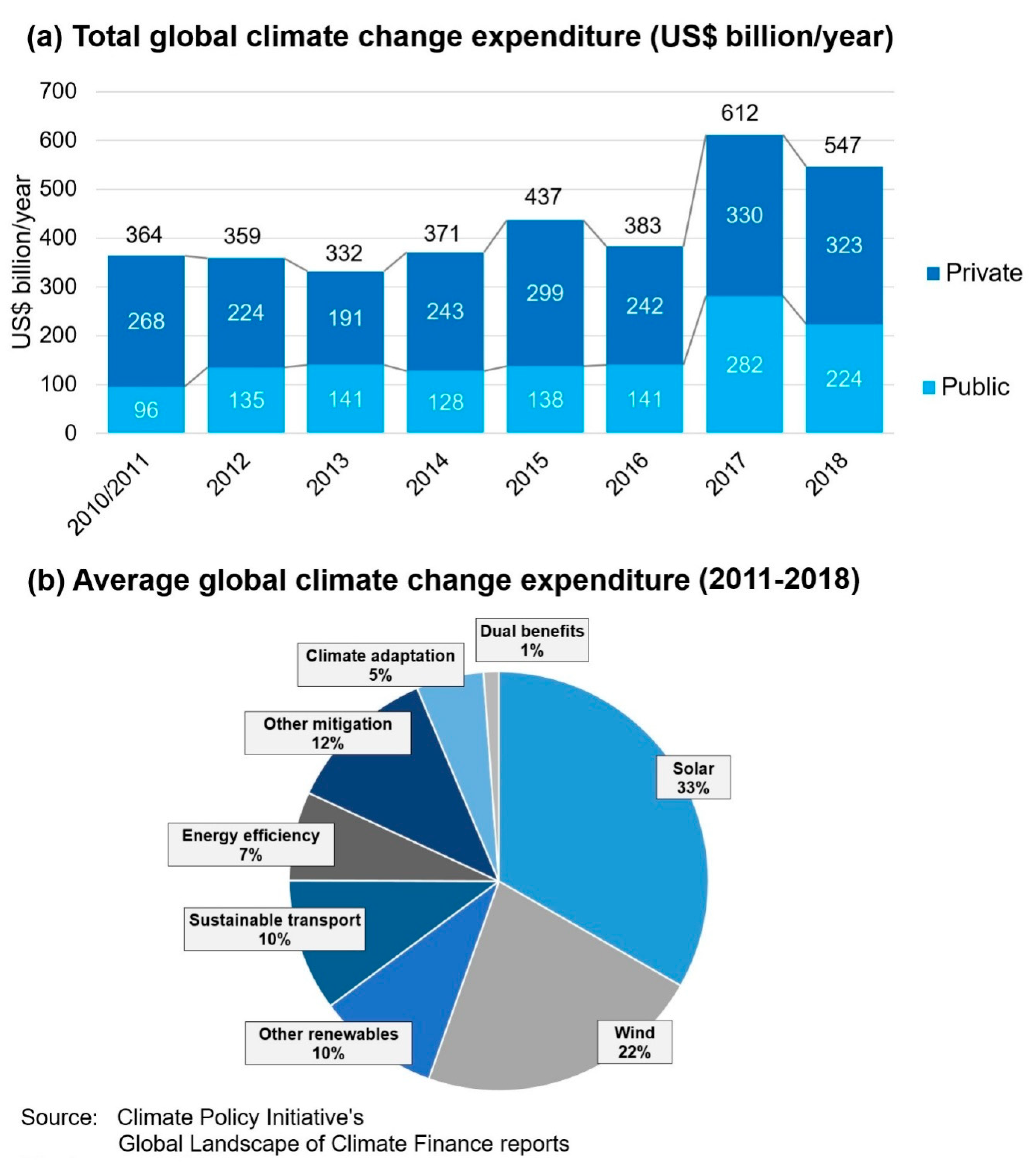
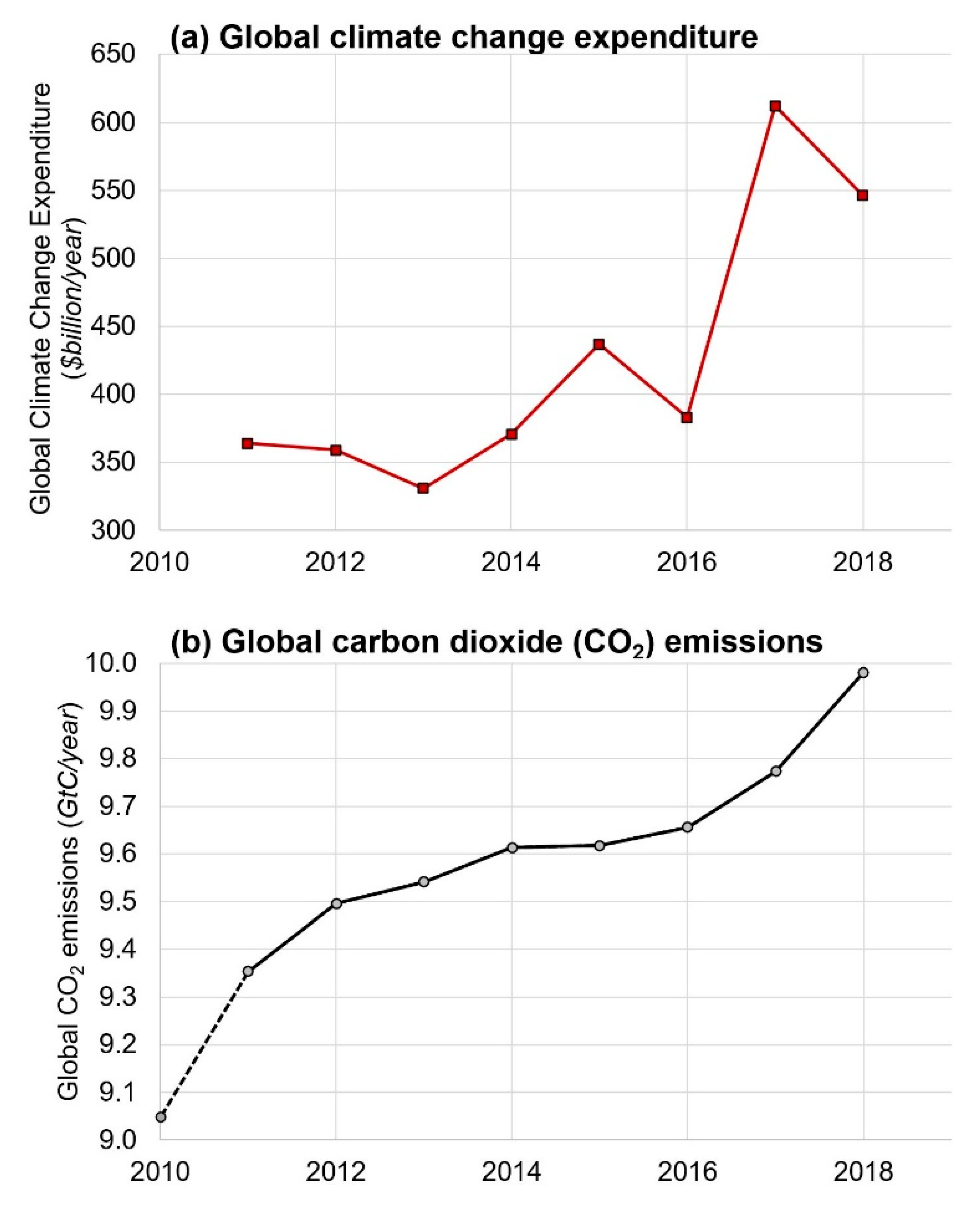
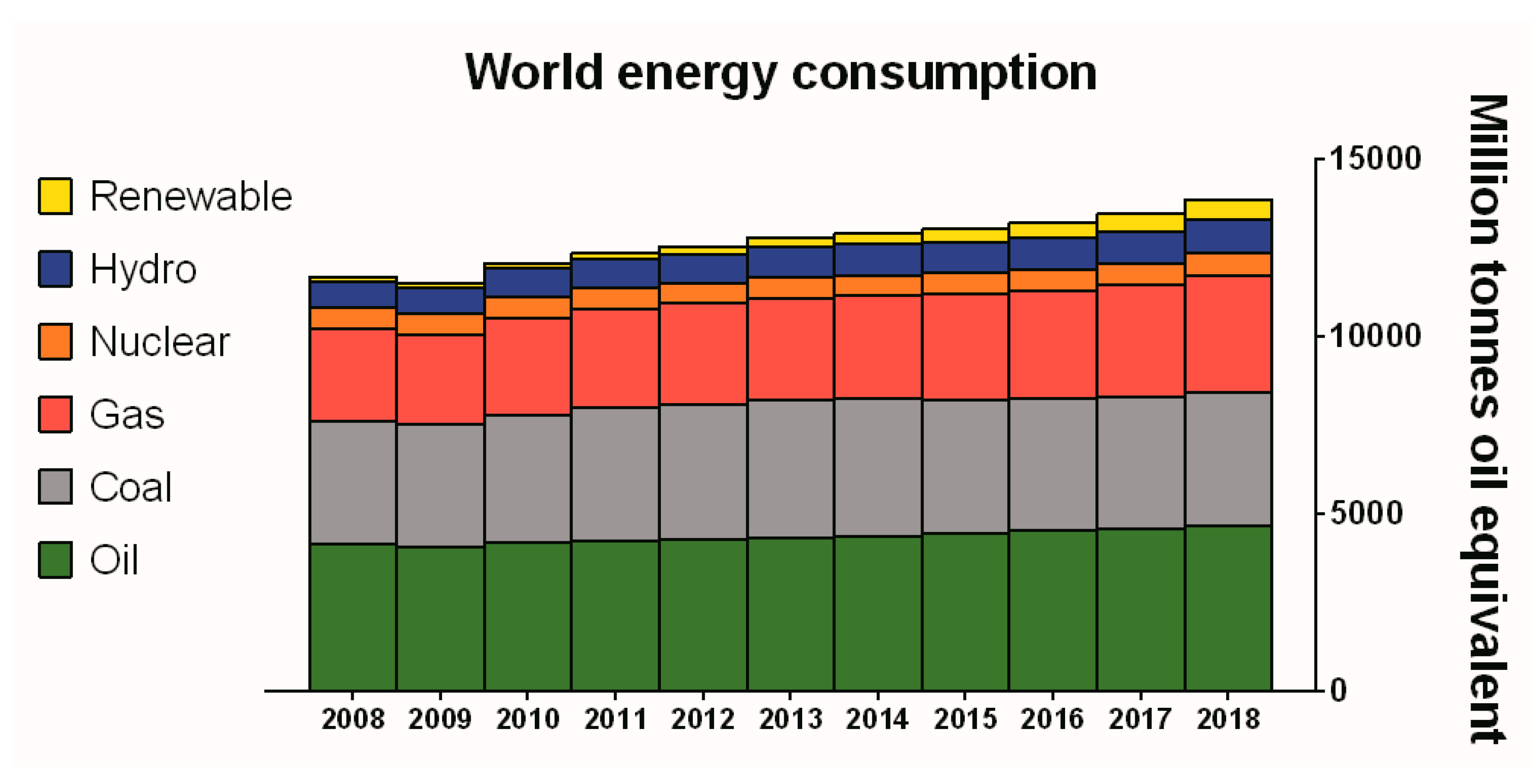
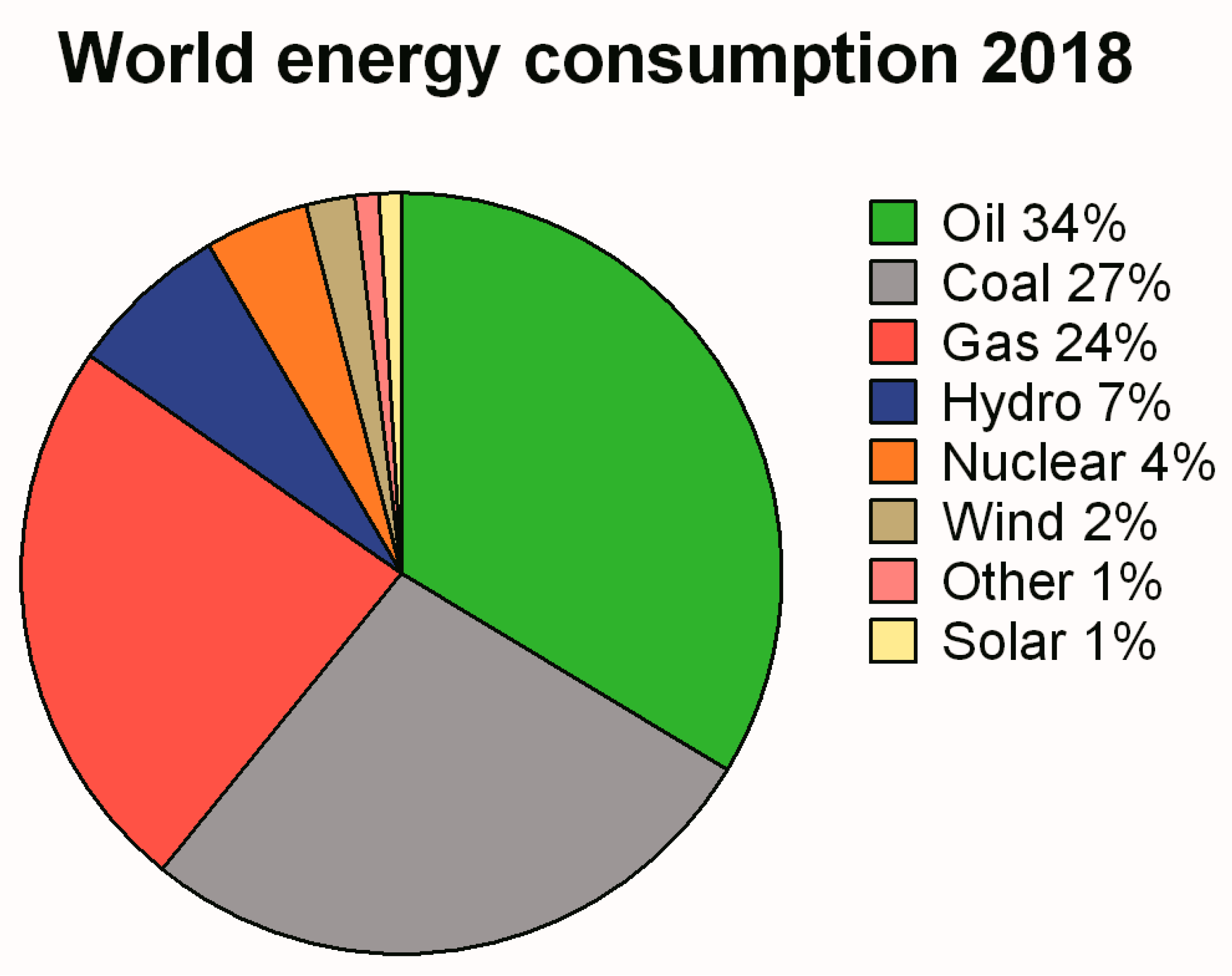
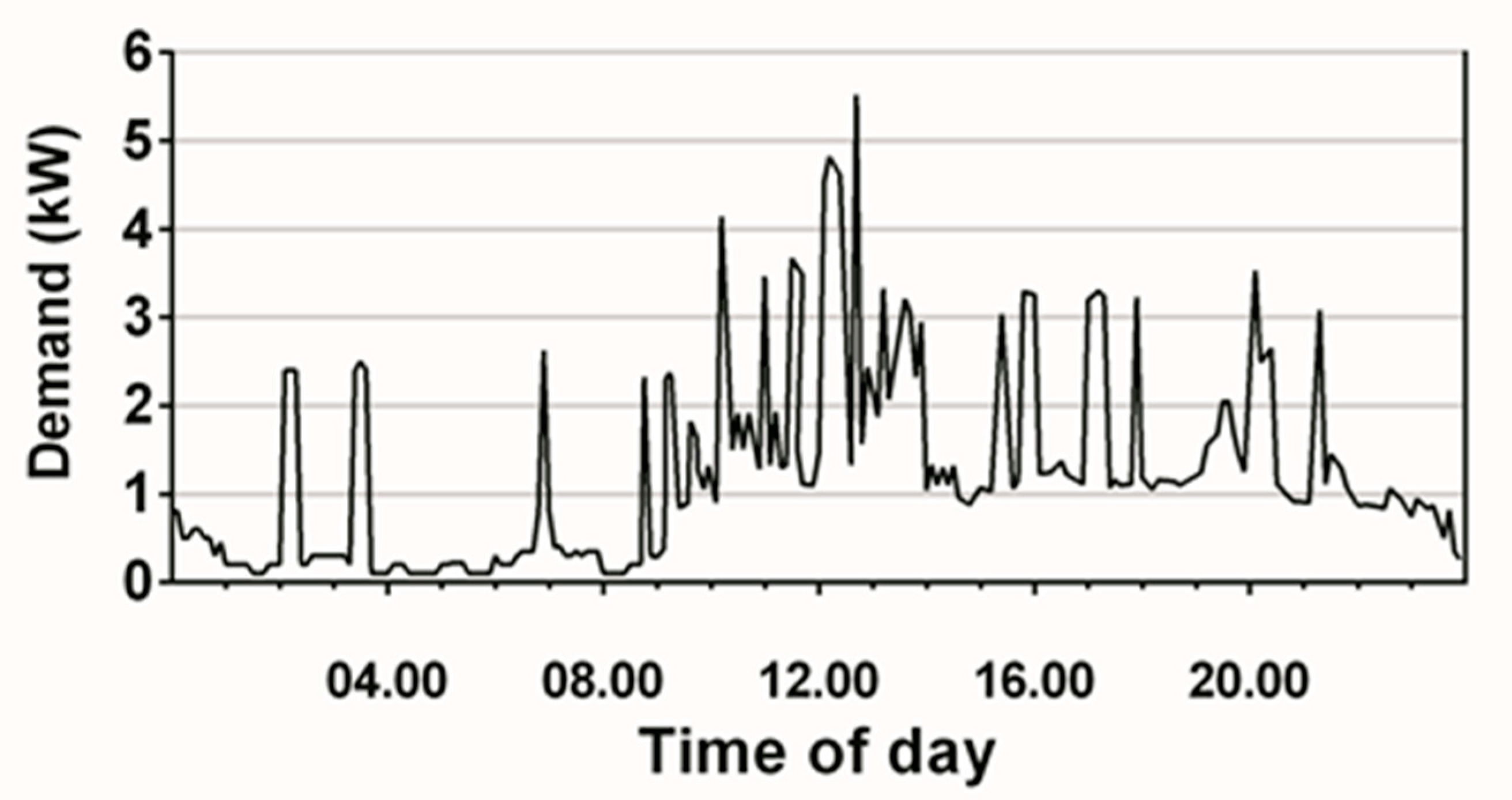
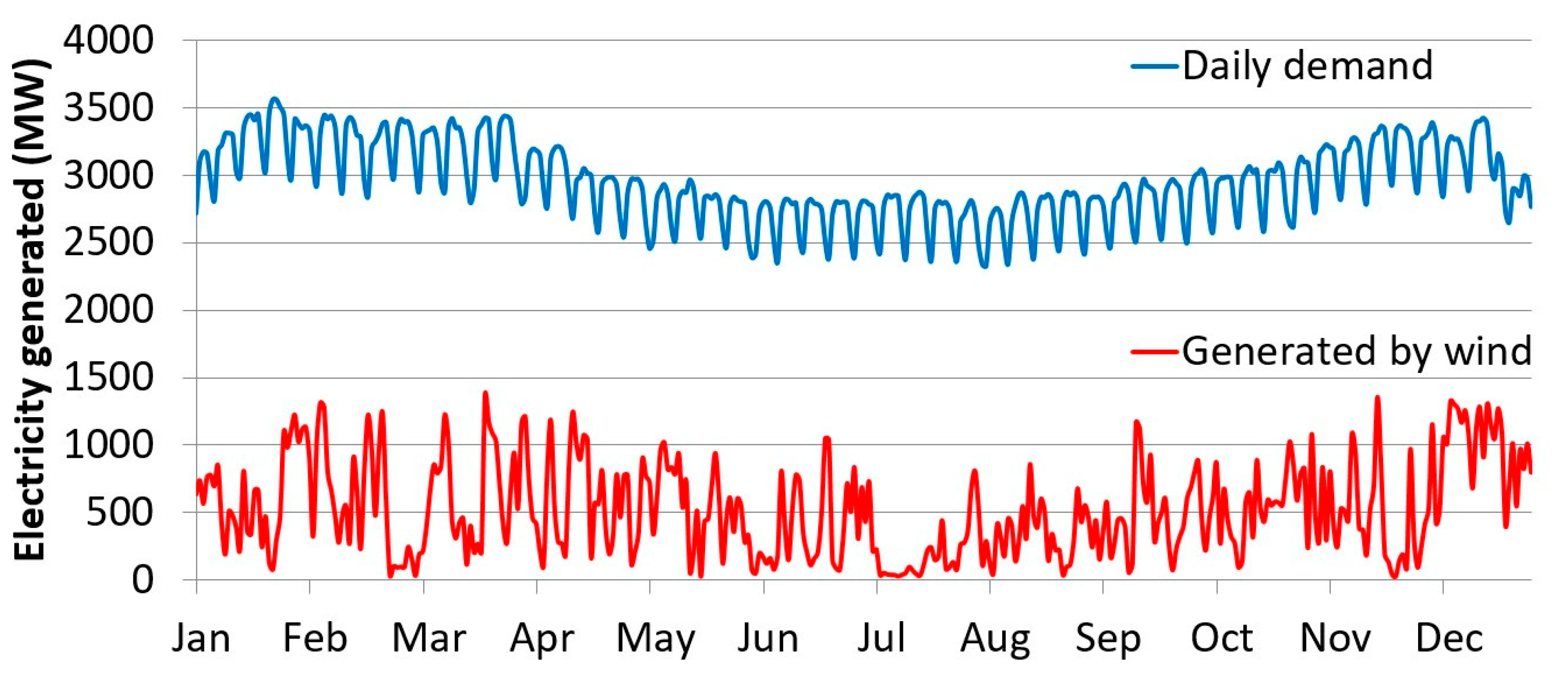
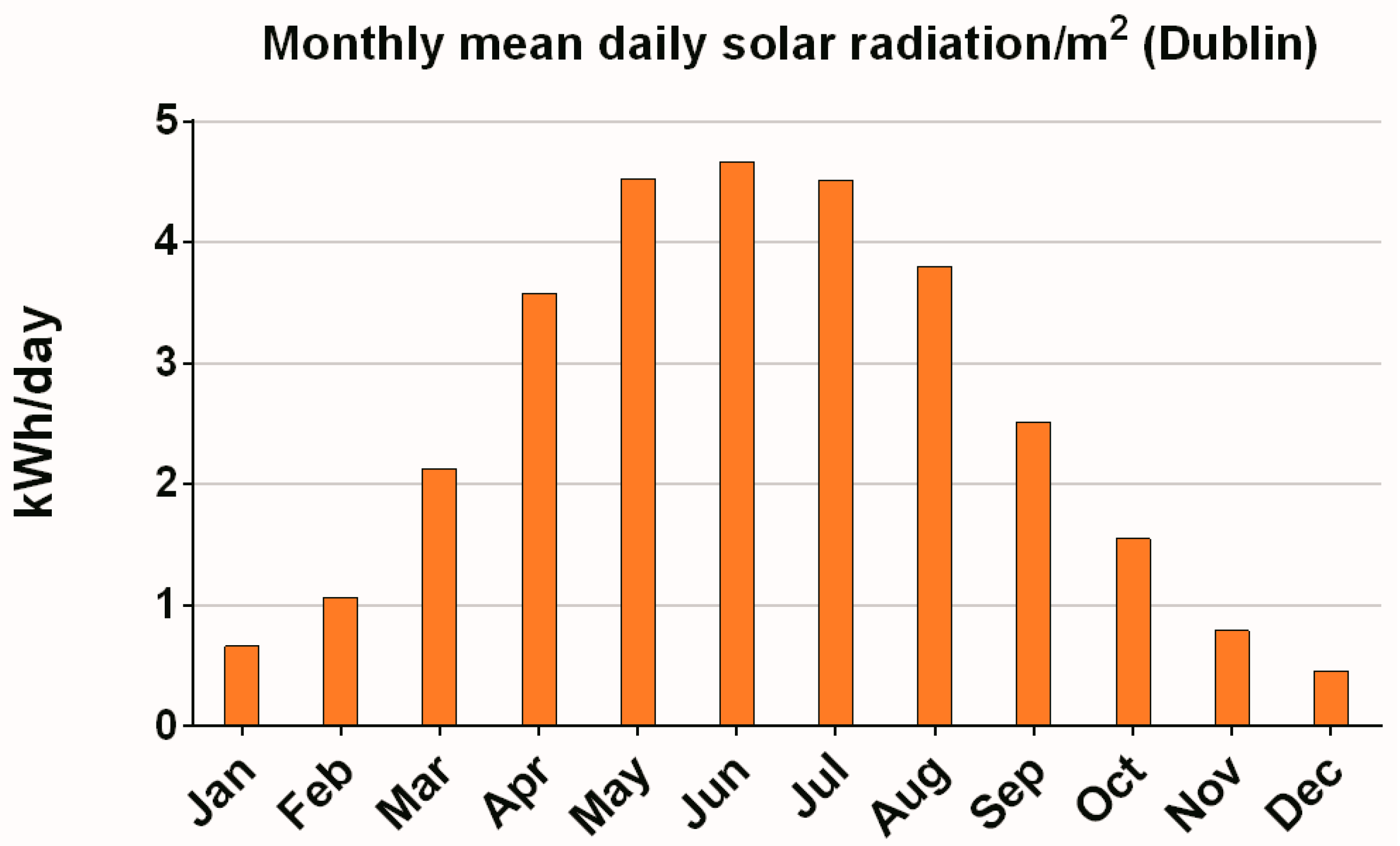
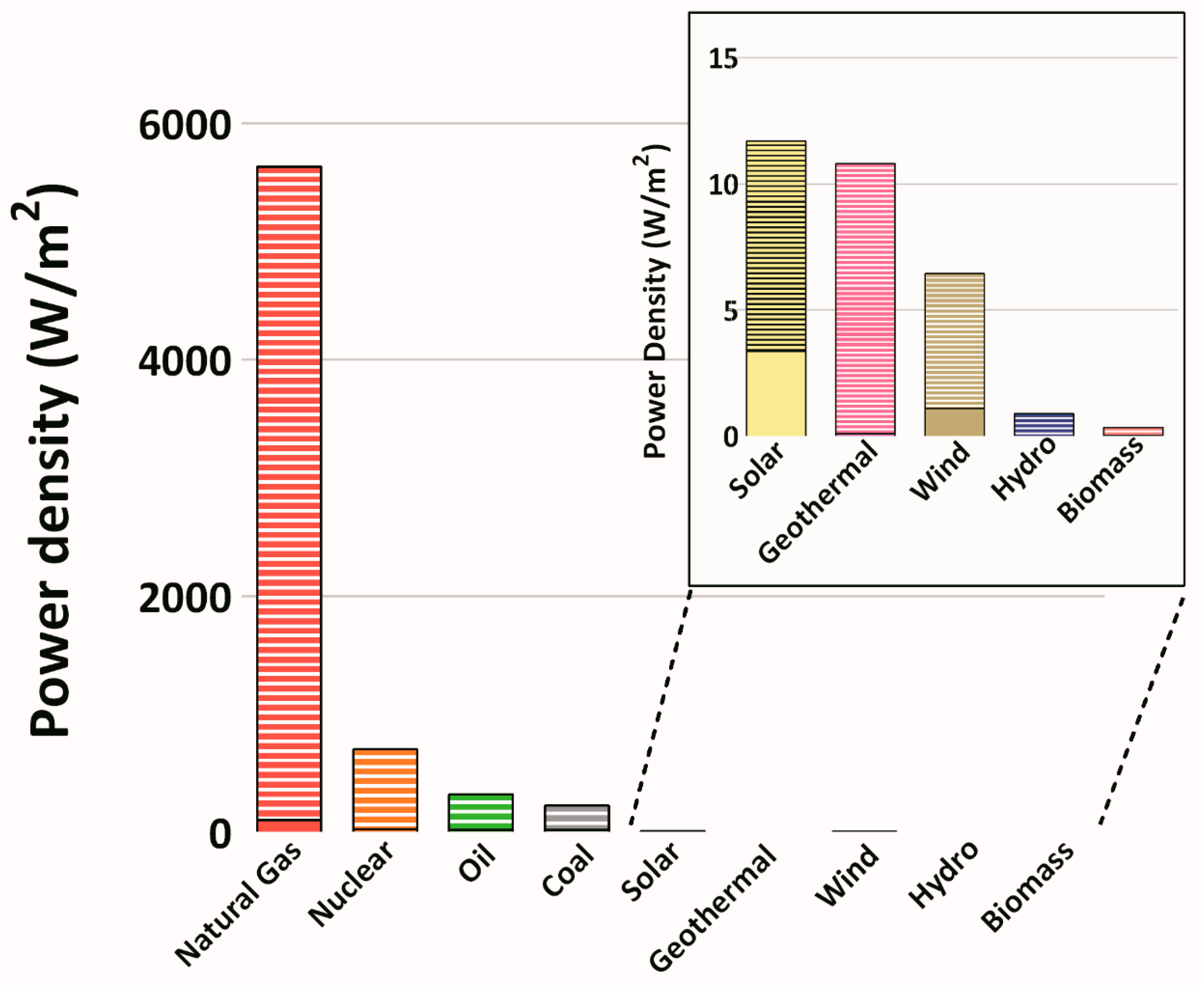
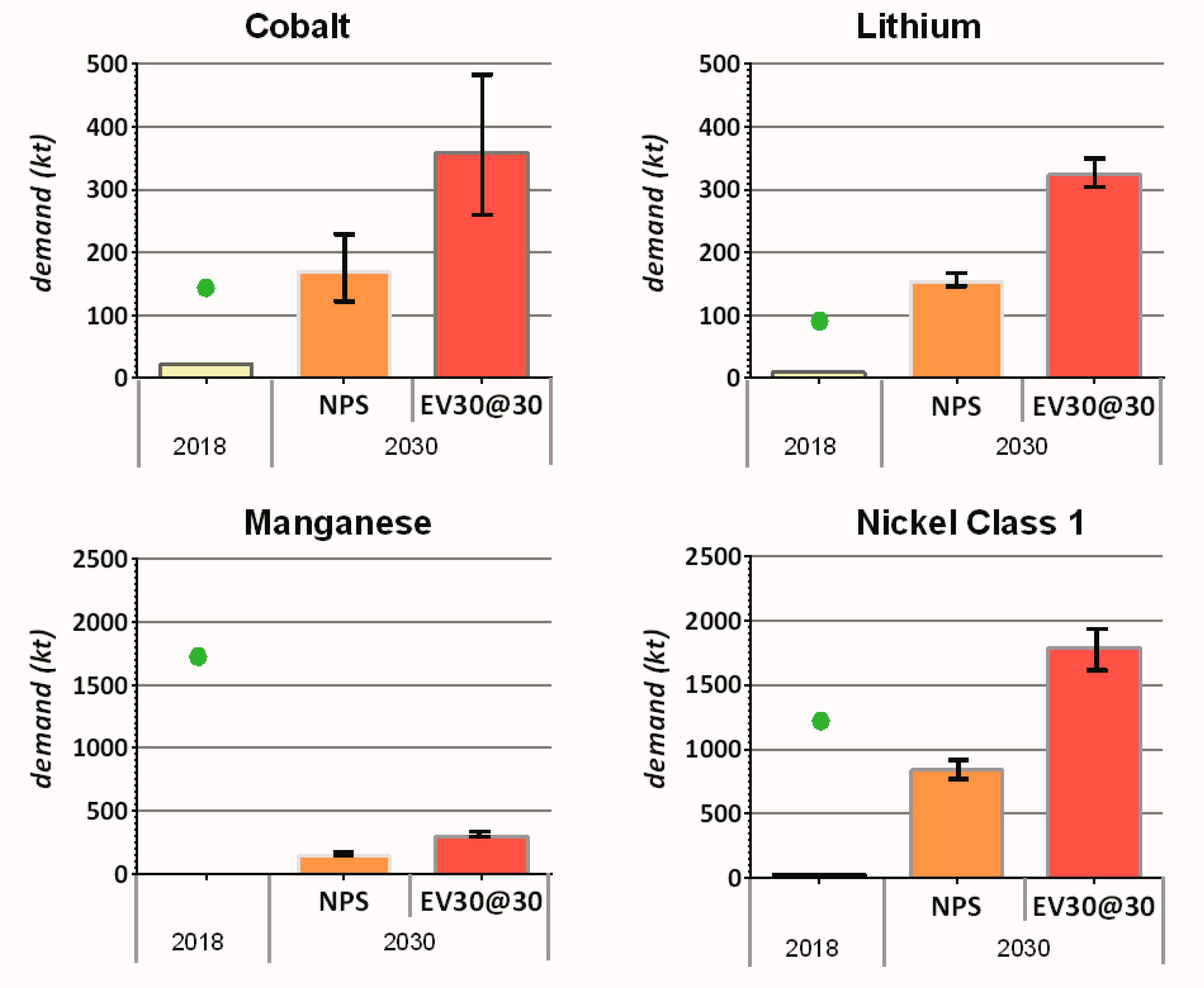
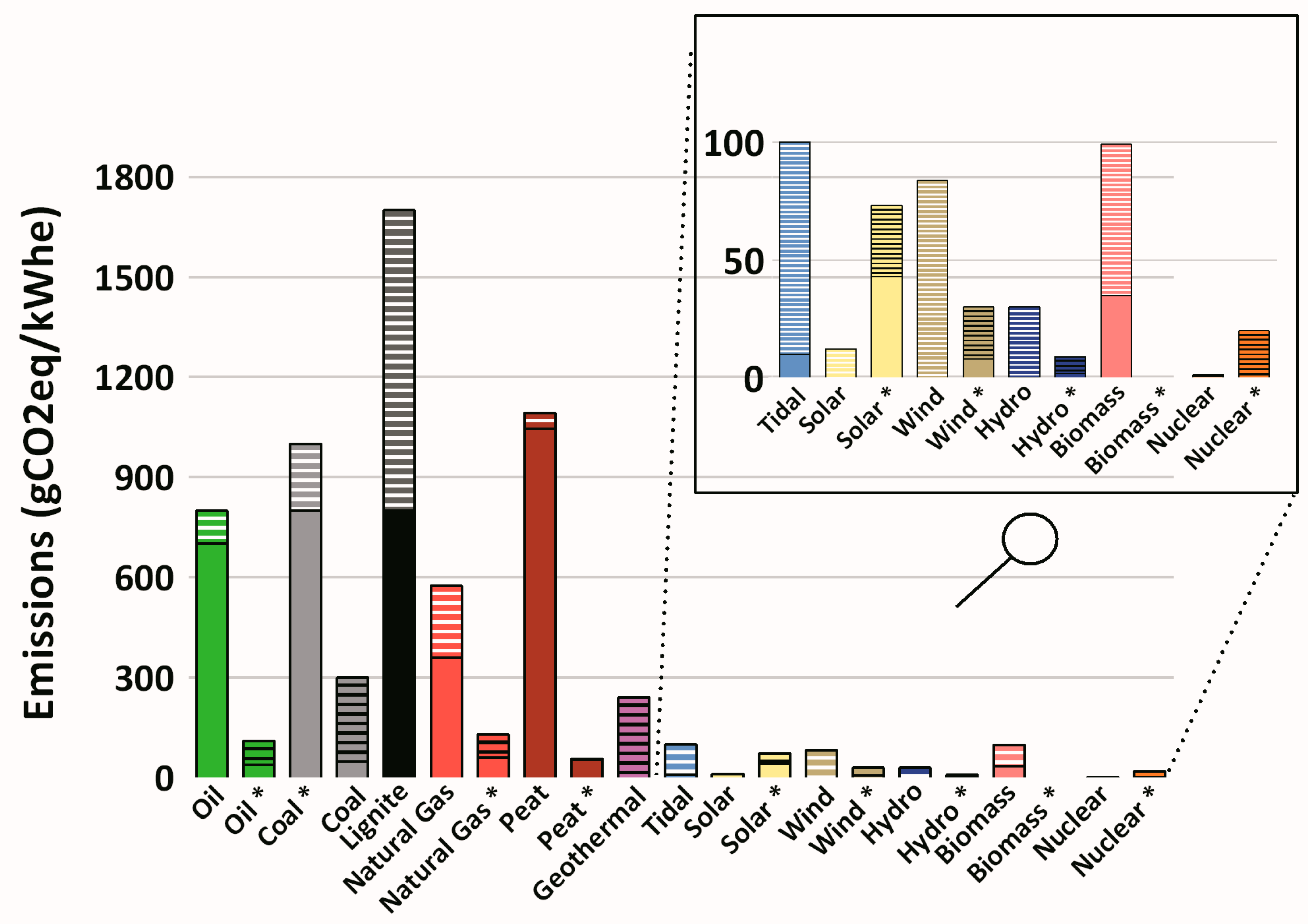
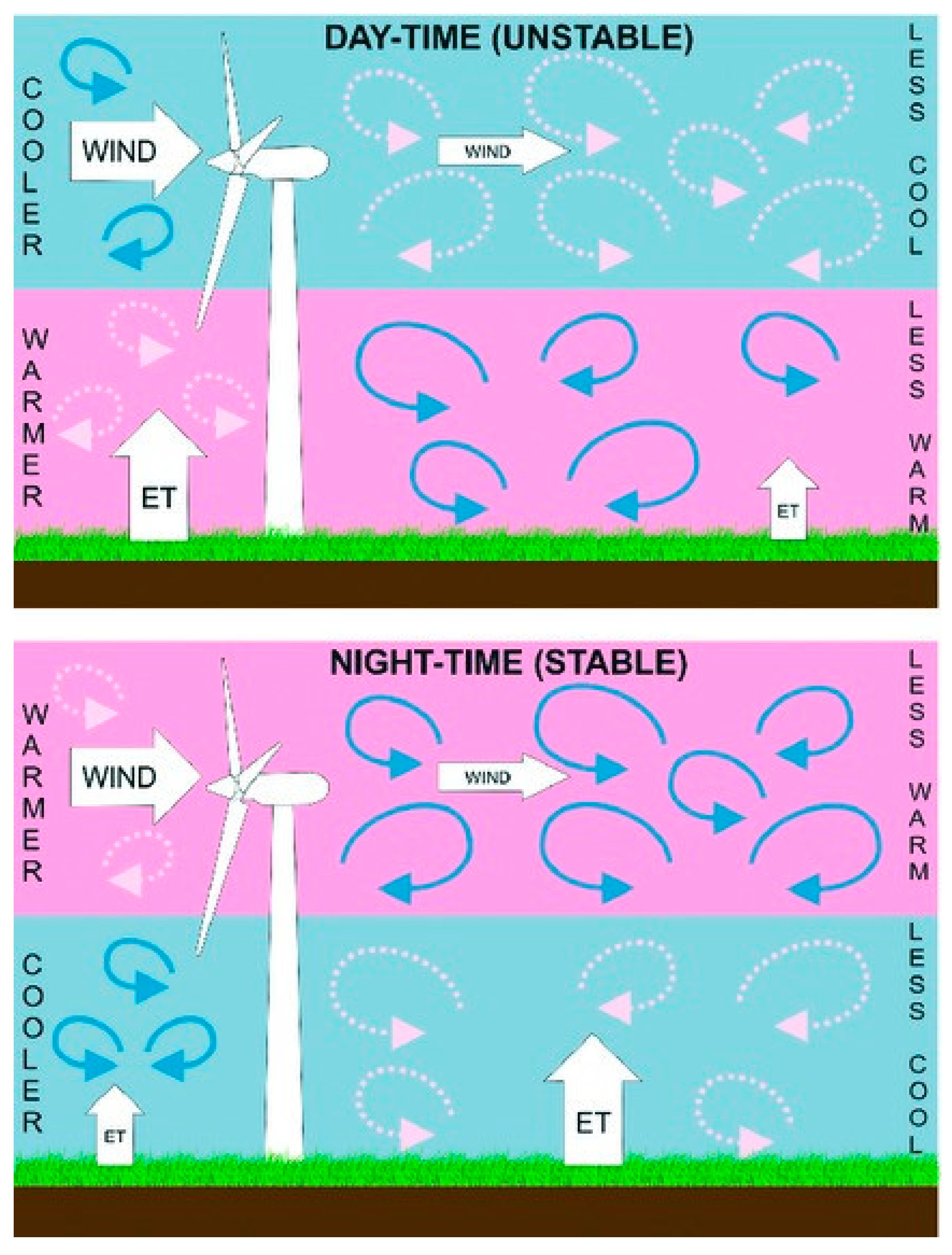
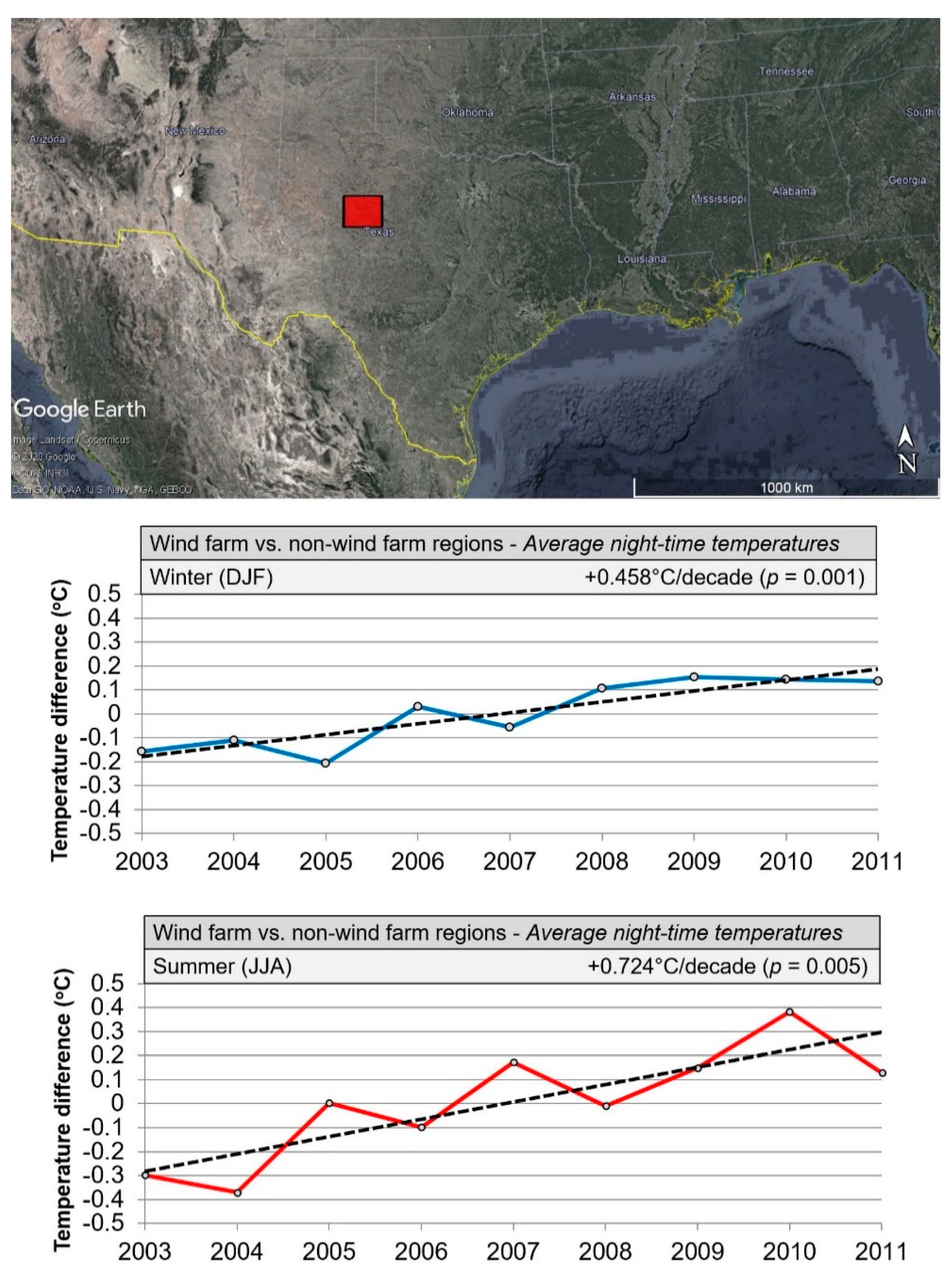

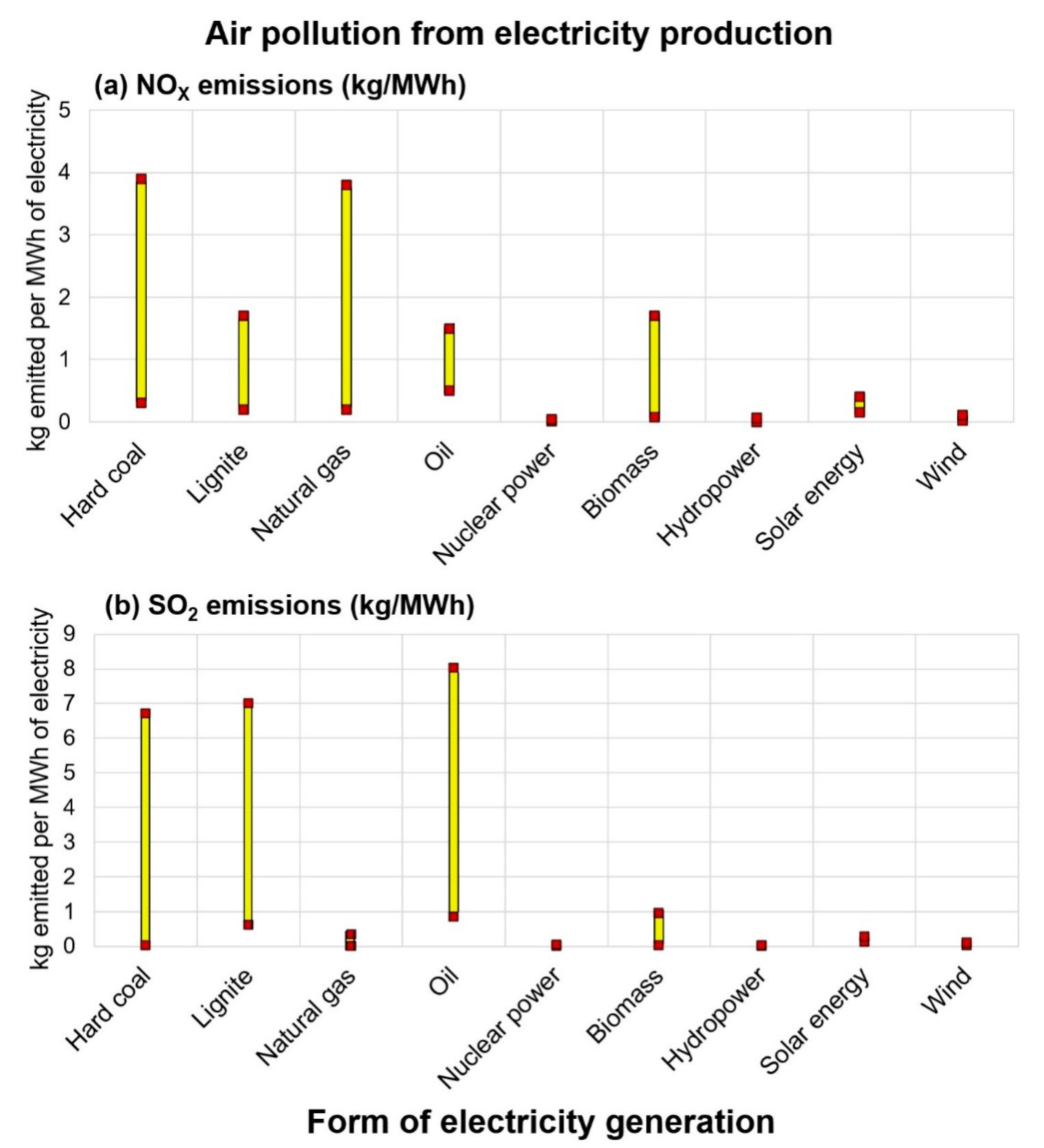
| Sector | Total Expenditure, 2011–2018 (8-Year Period) | Average Annual Expenditure | Percentage of Total Expenditure |
|---|---|---|---|
| Solar | US$ 1220 billion | US$ 152 billion | 33% |
| Wind | US$ 810 billion | US$ 101 billion | 22% |
| Biomass & waste * | US$ 75 billion | US$ 9 billion | 2% |
| Hydroelectricity * | US$ 75 billion | US$ 9 billion | 2% |
| Biofuels * | US$ 25 billion | US$ 3 billion | 1% |
| All other renewables * | US$ 170 billion | US$ 21 billion | 5% |
| Sustainable transport | US$ 375 billion | US$ 47 billion | 10% |
| Energy efficiency | US$ 250 billion | US$ 31 billion | 7% |
| Other climate mitigation policies | US$ 430 billion | US$ 54 billion | 12% |
| Climate adaptation policies | US$ 190 billion | US$ 24 billion | 5% |
| Dual benefits | US$ 40 billion | US$ 5 billion | 1% |
| Total | US$ 3660 billion | US$ 458 billion | 100% |
| Engineering Concerns | Environmental Concerns | ||||||
|---|---|---|---|---|---|---|---|
| Intermittency | Power Density | Resource Depletion | Greenhouse Gas (GHG) Emissions | Air Pollution | Biodiversity Concerns | Other Environmental Concerns | |
| Electricity | |||||||
| Coal | No | High | Finite, but substantial reserves | High | High | Moderate | Mining impacts |
| Peat | No | High | Finite | High | High | High | Unique biomes |
| Oil | No | High | See “Peak oil” debate | High | Moderate | Low | Possibility of oil spills |
| Natural gas | No | High | See “Peak gas” debate | Moderate | Low | Low | Potential impacts from “fracking” |
| Nuclear | No | High | Finite, but substantial reserves | Low | Low | Low | Waste disposal, possible meltdowns |
| Hydroelectricity | No | Low | Limited by geography | Low | Low | Moderate | Alters local environment |
| Biomass | No | Very low | Requires large land areas | “Carbon-neutral” | High | Very high | Competition with agriculture |
| Geothermal | No | Low | Limited by geography | Low | Low | Low | |
| Solar | Yes | Low | Resource-heavy construction | Low | Low | Moderate | Disposal of waste |
| Wind | Yes | Very low | Resource-heavy construction | Low | Low | Moderate | Causes local climate change |
| Tidal | Yes | Low | Resource-heavy construction | Low | Low | Low | |
| Transport | |||||||
| Oil | No | High | See “Peak oil” debate | High | High | Low | Possibility of oil spills |
| Biofuels | No | Very low | Requires large land areas | “Carbon-neutral” | Moderate | Very high | Competition with agriculture |
| EVs | * | * | Major concern | Very low | Very low | Low | Disposal of waste |
© 2020 by the authors. Licensee MDPI, Basel, Switzerland. This article is an open access article distributed under the terms and conditions of the Creative Commons Attribution (CC BY) license (http://creativecommons.org/licenses/by/4.0/).
Share and Cite
ÓhAiseadha, C.; Quinn, G.; Connolly, R.; Connolly, M.; Soon, W. Energy and Climate Policy—An Evaluation of Global Climate Change Expenditure 2011–2018. Energies 2020, 13, 4839. https://doi.org/10.3390/en13184839
ÓhAiseadha C, Quinn G, Connolly R, Connolly M, Soon W. Energy and Climate Policy—An Evaluation of Global Climate Change Expenditure 2011–2018. Energies. 2020; 13(18):4839. https://doi.org/10.3390/en13184839
Chicago/Turabian StyleÓhAiseadha, Coilín, Gerré Quinn, Ronan Connolly, Michael Connolly, and Willie Soon. 2020. "Energy and Climate Policy—An Evaluation of Global Climate Change Expenditure 2011–2018" Energies 13, no. 18: 4839. https://doi.org/10.3390/en13184839
APA StyleÓhAiseadha, C., Quinn, G., Connolly, R., Connolly, M., & Soon, W. (2020). Energy and Climate Policy—An Evaluation of Global Climate Change Expenditure 2011–2018. Energies, 13(18), 4839. https://doi.org/10.3390/en13184839




